














Dear Readers,
buzzword
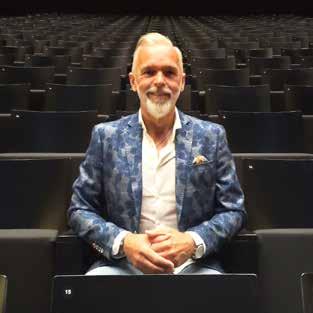
Sustainability has long since become more than just a buzzword – it is an attitude that characterises Kufsteinerland in many areas. The latest award of the Ecolabel confirms that we are on the right track: Kufsteinerland is one of the few regions in Austria to have been certified for its conscious commitment to sustainable tourism.
This special recognition is a sign of the responsible use of nature and resources – and of the pursuit of a future in which travel and environmental awareness go hand in hand.
This issue of MOMENTE MAGAZINE focuses on this balance between progress and preservation. From traditional farms to innovative projects, it shows how deeply ingrained sustainability is in the region. Exciting stories take you to places where mindful economic activity can be felt, and accompany people who are committed to preserving culture and nature, showing how tradition and modernity can coexist sustainably.
Whether it‘s gentle mobility with the KufsteinerlandCard, regional delicacies from direct marketers or conscious experiences in nature – Kufsteinerland shows that sustainable tourism is not only possible, but enriching.
Have fun exploring and experiencing!

Find out more about the Austrian Ecolabel for destinations on page 58.
Imprint: Responsible for content: TVB Kufsteinerland, Unterer Stadtplatz 11–13, 6330 Kufstein, Tel. +43 5372 62207, Circulation: 14,000 in German, 1,000 in English, Concept / text / graphics: Oberhuber & Kuen Kommunikation GmbH, Place of publication: Kufstein, Printed by: Aumüller Druck GmbH & Co. KG, Weidener Straße 2, 93057 Regensburg
Philipp Huber, Page 7-9: Alex Gretter, Page 10: Mathäus Gartner, Page 11: Stadtwerke Kufstein, Page 12: O&K Kommunikation, Page 13: Stadtwerke Kufstein, SvenFotografiert, Page 14-17: Philipp Huber, Page 18: TVB Kufsteinerland_Standortmarketing Kufstein Alex Gretter, Page 19: Vanmey Photography, Alex Gretter, Page 20-23: Philipp Huber, Page 24: Florian Egger, Page 25: AdobeStock, Sportalpen Marketing, Stadtwerke Kufstein, TVBKufsteinerland, Page 26: Hannes Dabernig, Page 27: ueberall, Stadtarchiv Kufstein, Page 28: Hannes Dabernig, Alexander Drastil, Page 32-35: Philipp Huber, Page 36-37: Verena Locher, Page 38-39: Peter Kitzbichler, Passionsspiele Erl, Page 40-41: Mathäus Gartner, Page 42: AdobeStock, Page 43: Dominik Zwerger, Mathäus Gartner, O&K Kommunikation, Page 44: Oberbichlhof, Page 45: Eva Frischling, Page 46-48: Philipp Huber, Page 50-51: Philipp Huber, Page 53-54: Philipp Huber, Page 56: TVB Kufsteinerland, Lisa Eiersebner, Page 57: Florian Egger, Ulli Raab

from Kufsteinerland
Step 1

In this edition of MOMENTE MAGAZINE you can expect not only interesting stories, but also interactive content that offers a completely different insight into our region. Using the innovative augmented reality app Livi AR, you can experience our stories in the form of videos, audio clips, 360° shots and much more.
Install the free Livi AR app


Step 2
Open the application and activate the ‘Moments edition 2025/26’ in the menu or scan the following activation key:
Scan here!

06
Perspectives on space and time
How is our view of space and time changing?
A photo series about architecture and urban living space in the outskirts.
10
The discovery of deceleration –10 years of the Kaiserlift
From ski resort to nature experience: the Kaiserlift celebrates a decade of sustainable tourism. Why this lift is more than just a mountain railway and what makes it so special.
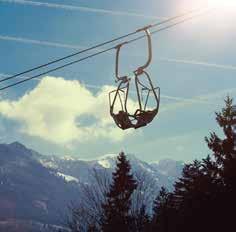
14
Step 3

When you see this symbol on the following pages, you can point your camera at the corresponding image and the content will be played.
More information at: www.livi-ar.at
The sunny side of climate change – melons from Tyrol Melons from Tyrol – sounds crazy?
But that is exactly what a resourceful farmer in Kufsteinerland is making possible. A glimpse into the future of regional agriculture.
20
Winter swimming – the healing shock of cold Icy water, incredible benefits: a Kufstein resident swears by winter swimming. Why people voluntarily plunge into the ice-cold Hechtsee lake and what it does for your health.
Tips and recommendations on pages 18, 24, 40 and 56
24
Breathe in the fresh air
Four places that will help you breathe deeply. From hidden power spots to waterfalls with magical powers – here you can experience pure nature in the region.
26
A visit from an old lady –revitalisation at Unterer Stadtplatz 19
A house tells its story: from historic walls to a modern hotel. A look behind the scenes of a special transformation.
32
The antics of the wild journeymen
When the Perchten set out, it gets loud, wild and mystical. Why this centuries-old tradition is still fascinating today – and what‘s behind the terrifying masks.
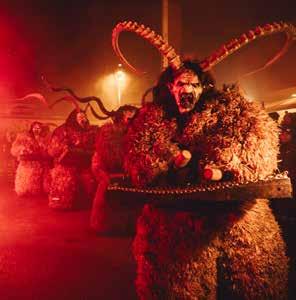
36
No village without a Passion play –no Passion play without a village
When an entire village becomes a stage: in Erl, the Passion play is not just a tradition, but a labour of love. A look at the people behind the spectacle.
40
Food pairing with a difference –By bike to Alpine dairies and cheese dairies
A pleasure trip on two wheels: Discover the best cheese dairies and the variety of flavours in the region.
46
Flea market in Ebbs –colourful variety
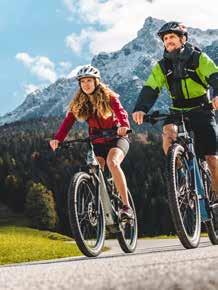
Between rarities, treasures and bargains: why this flea market is not only a paradise for hunters and collectors.
50
Watch out, mice! –
The vole and Kufstein‘s cultural scene Rebellion, rock and culture: how an alternative club in Kufstein stirred up the scene – and continues to leave its mark today.
Stay connected with us
If you want to keep dreaming of Kufsteinerland even after your holiday, follow us on Instagram and Facebook:
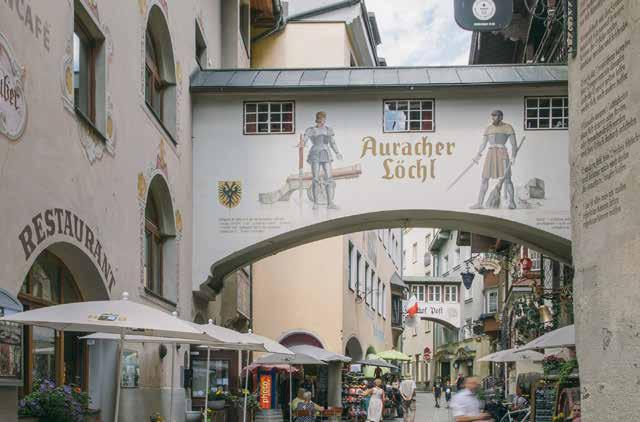
Discover the historic heart of Kufstein in the Auracher Löchl!
Immerse yourself in authentic Tyrolean hospitality at the Auracher Löchl, a charming inn with over 600 years of history. Enjoy traditional cuisine, premium steaks, and gourmet dishes, perfectly paired with exquisite wines. Our cozy parlors and inviting atmosphere make every visit an unforgettable experience.
Ideally located in the heart of Kufstein, at the foot of the Kufstein Fortress, the Auracher Löchl is the perfect starting point for your vacation in Tyrol.





Visit the Auracher Löchl bars!
Deep within the fortress rock, the legendary Stollen 1930 awaits you – the world‘s largest Gin Gallery, featuring over 1,000 gins and officially listed in the Guinness Book of Records. Enjoy the unique atmosphere with a bar tour or an exclusive gin tasting.
Round off your evening at the Skybar Panorama 1830 – where breathtaking views meet first-class drinks. A night of pure enjoyment and unforgettable moments is guaranteed!

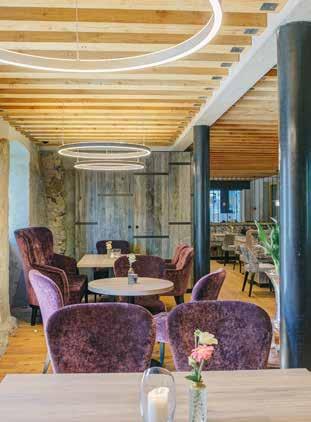



Architecture reflects a region‘s cultural identity and historical development. Different photographic perspectives reveal, new insights into the relationship between space, time and observation are revealed.
Choosing the photographic perspective – whether central perspective, side view or street view – can emphasise different facets of the architecture. Light, shadow and lines play a central role and make buildings not only visible, but also tangible.
The photographer‘s perspective opens up new interpretations and shows buildings as an expression of historical developments, cultural identity and human creativity.
MOMENTE MAGAZIN follows this principle: changing perspectives and making the overlooked visible. Similar to the hidden side of the moon, it opens up new perspectives on the familiar. Surprise is central to this, because only the unexpected enables real discoveries. So not just in the magazine, but also across the region, a new way of seeing is emerging –one that inspires, questions and broadens horizons.

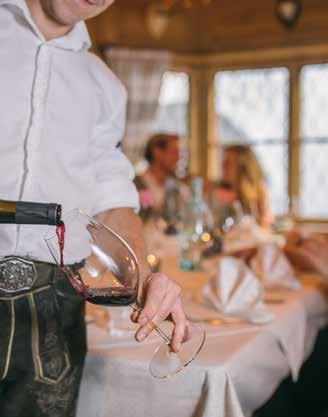
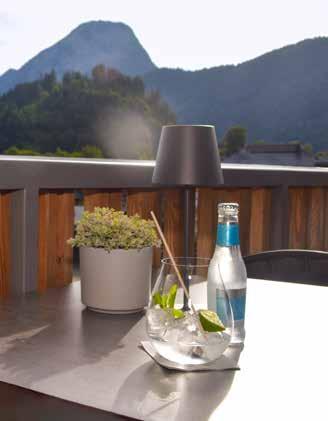
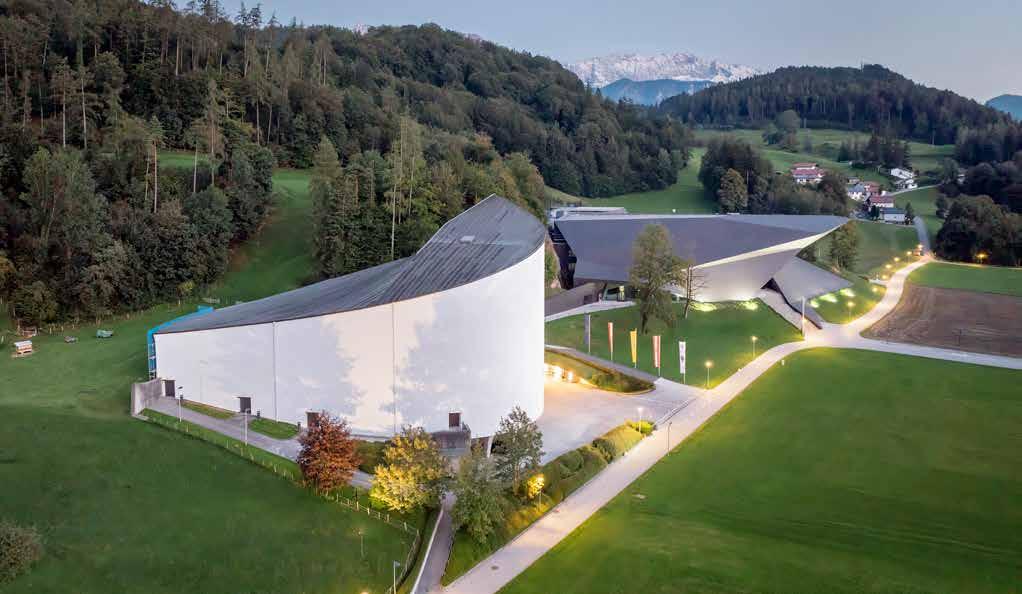


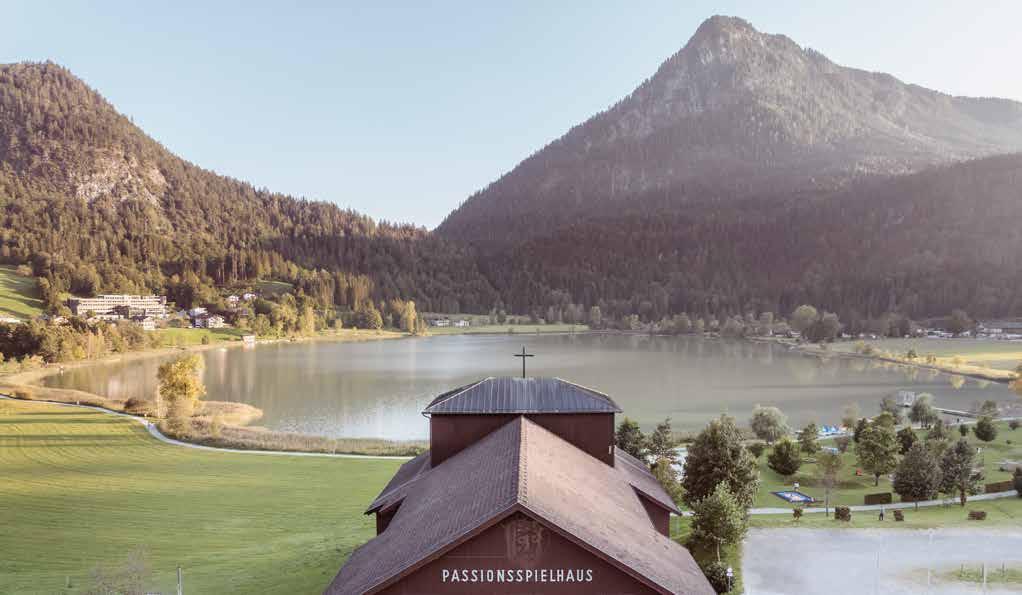
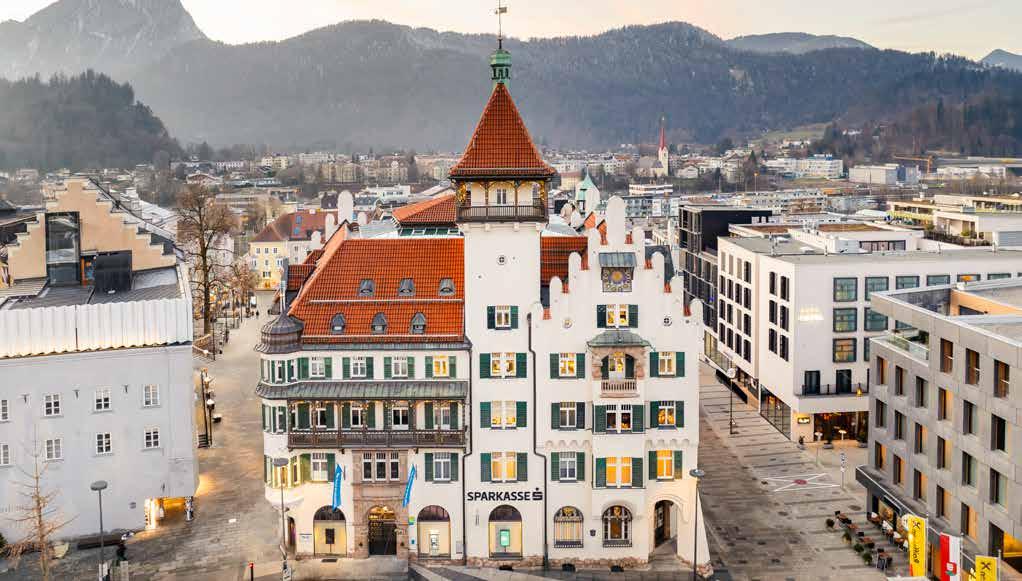
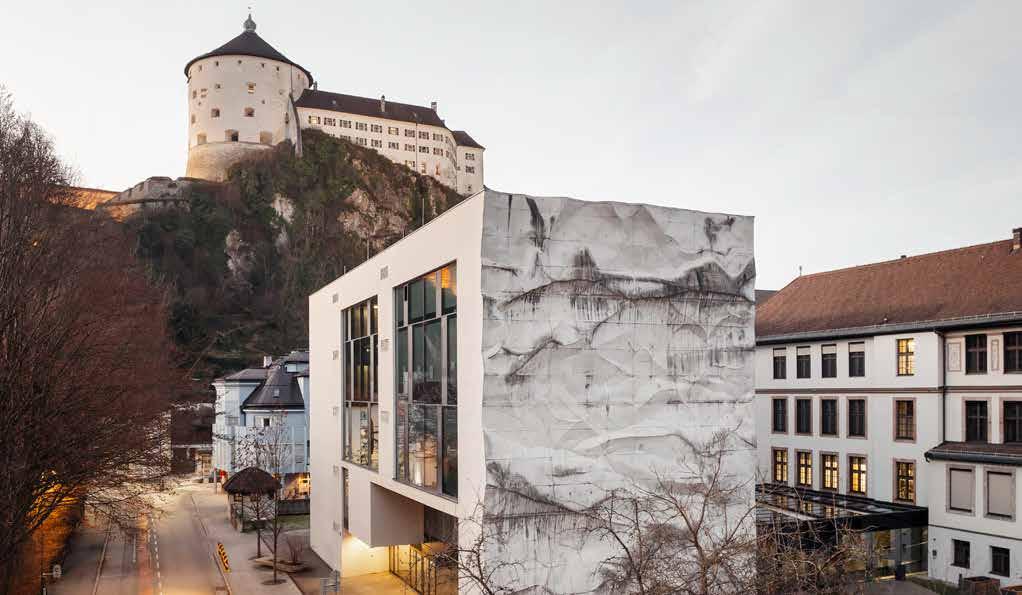
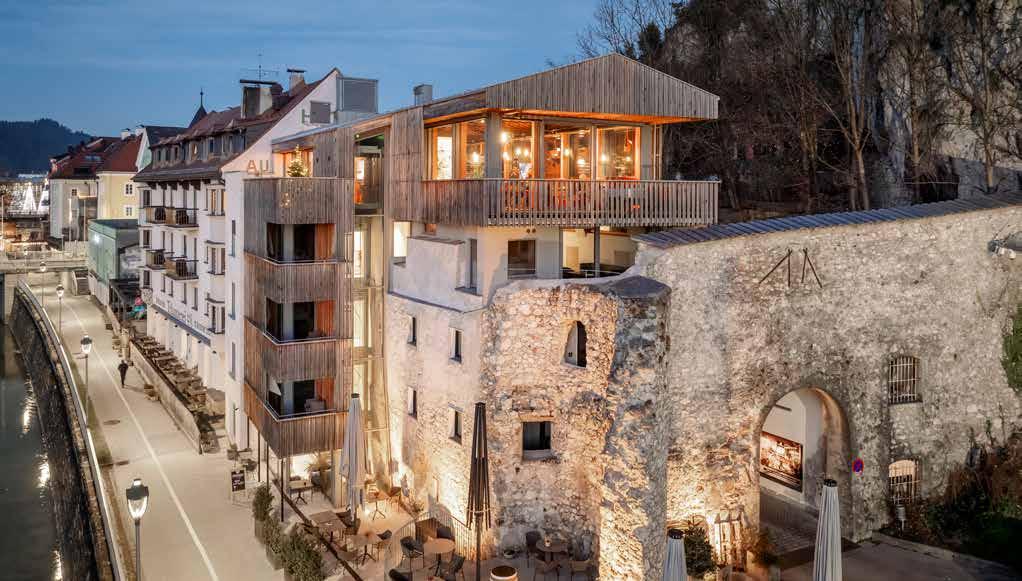
10
Between the majestic peaks of the Kaiser Mountains and the fortress town of Kufstein, the Kaiserlift is a symbol of slowing down. In the summer months, it brings those seeking peace and quiet to the Kaiser Mountains. But its roots go back to a time when it was particularly popular in winter: generations of guests and locals learned to ski on the Steinberg.

Even then, the Kaiserlift was divided into two sections. The downhill run led from Brentenjoch over the Duxer Alm – past the Gasthof Schneerose – into the valley. A particularly challenging spot in the upper part, the ‘Kanonenrohr’, was considered a test of courage: there, young Kufstein residents felt like Franz Klammer when they aced icy passage in a flash. Further down, the tracks of the ski slope are still visible today, even though the forest is slowly reclaiming the cleared areas.
Once at the top of the Brentenjoch, the so-called Grabenlift was waiting a few metres further on. This lift initially descended 150 metres into the Gaisgraben and took skiers on the other side back up to the Steinberg. There were three more lifts there: the platter lift, which was described as a ‘curved lift’ and led upwards in two curves, partly parallel to a t-bar lift, was particularly impressive. The mogul slope from the top station of the platter lift was legendary: so steep that no piste groomers could be used, it offered a deep-snow paradise when there was fresh snow and later challenging moguls. Further to the left was another steep drag lift, the ‘Bettelsteiglift’. With time, demands changed and winter operations were discontinued. However, the Kaiserlift found a new purpose in summer - as a means of ascent for hikers and nature lovers.


Strength lies in serenity
For ten years now, the newly opened Kaiserlift has been transporting guests and locals comfortably into the Kaiser Mountains. Andreas Riedmann, division manager at Stadtwerke Kufstein, describes the special feature of the facility: ‘A ride on the Kaiserlift is ideal for those who long for deceleration and enjoy the soothing tranquility of nature to the full.’
The low transport capacity of 300 passengers per hour emphasises this concept. “A modern gondola lift can transport up to 3,000 people in the same time – but that would be untenable for the network of trails in the Kaiser Mountains. Peace and space are what make this region so special,” explains Andreas Riedmann.
The difficult years and a fresh start
The Kaiserlift has a colourful history. At the end of the 1980s, it was on the verge of disappearing.
‘Why don‘t you take it for a shilling?’ offered Simon Herrmann Huber, who was a member of the Kufstein municipal council at the time. He took the offer and took over not only the lift but also 12 million schillings in debt.
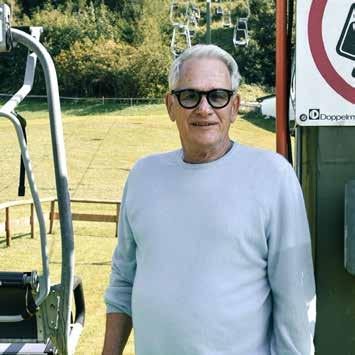
‘Nobody‘s locking up the lift!’
Simon Herrmann Huber has always been committed to the preservation of the Kaiserlift.
selling point for the lift. ‘They always said the lift was too slowas an argument against the lift. Now it even moves one metre per second slower than before. The new concept is deceleration – and that fits wonderfully.“
The takeover was an enormous challenge economically. ‘I put everything into the lift to avoid going bankrupt. I kept the lift running until the end, when I said: now it needs to be renovated. Ropes, sheaves, chairs, drives and supports were replaced and modern control technology was installed to bring the lift up to date. On 1 May 2015, the newly designed Kaiserlift was put back into operation.

‘What we are doing up there – in the nature reserve, with a great deal of tact and sensitivity – is unique in the entire Alpine region.’
As the division manager of the Kufstein municipal utilities, Andreas Riedmann is well aware of the uniqueness of the Kaiserlift and the Kaiser Mountains nature reserve.
The history of the Kaiserlift began on 8 December 1952 with the opening of the first lift in Pienzenauer Straße. This marked the beginning of a new era for tourism in Kufstein, because it brought people closer to nature and allowed them to experience the beauty of the surrounding mountain world up close. The old lift closed in 1994, but the idea of a mountain lift lived on.
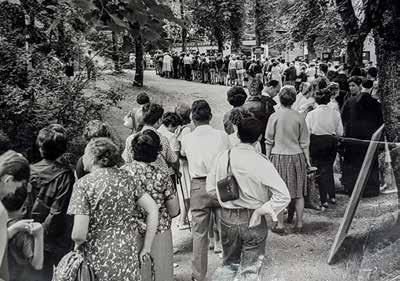
The opening of the ‘new Kaiserlift’ in 1971 was a significant event that cemented Kufstein‘s reputation as a hiking paradise. It offered hikers and nature lovers a convenient way to get to the heart of the Kaiser Mountains and enjoy the Alpine landscape. The Steinberg ski area was in operation until the early 1990s, when it was converted to summer operation.


‘I‘ve always said there‘s an opportunity if you do it small and well – the way they do it today,’ the visionary explains. He recognised the importance of the “ascent aid” for the whole region early on and saw the discovery of deceleration as a unique
Today, ten years after its reopening, the Kaiserlift is not only a symbol of the successful revival of a traditional facility, but also an example of sustainable tourism in the region. The lift offers an efficient way to overcome the height difference of a good 750 metres between the valley station and the mountain station. The 30-minute ride offers plenty of time to enjoy the view.
The tenth anniversary of the new Kaiserlift is not only a reason to celebrate, but also an opportunity to look back proudly on what has been achieved and to look to the future with confidence. The Kaiserlift remains a part of Kufstein‘s identity that will continue to carry people upwards in the coming decades – closer to nature, closer to themselves.

The Kufstein municipal utilities took over the Kaiserlift in 2014 and invested in a comprehensive renovation. On 1 May 2015 the modernised lift resumed operation.
Weddings, anniversaries, seminars, corporate events, baptisms, incentives, or simply a small gathering. There’s always a reason to celebrate.
We offer the perfect setting for every occasion.
From a classy hotel to a trendy bar, we provide exceptional service from the first idea to the final execution

<<

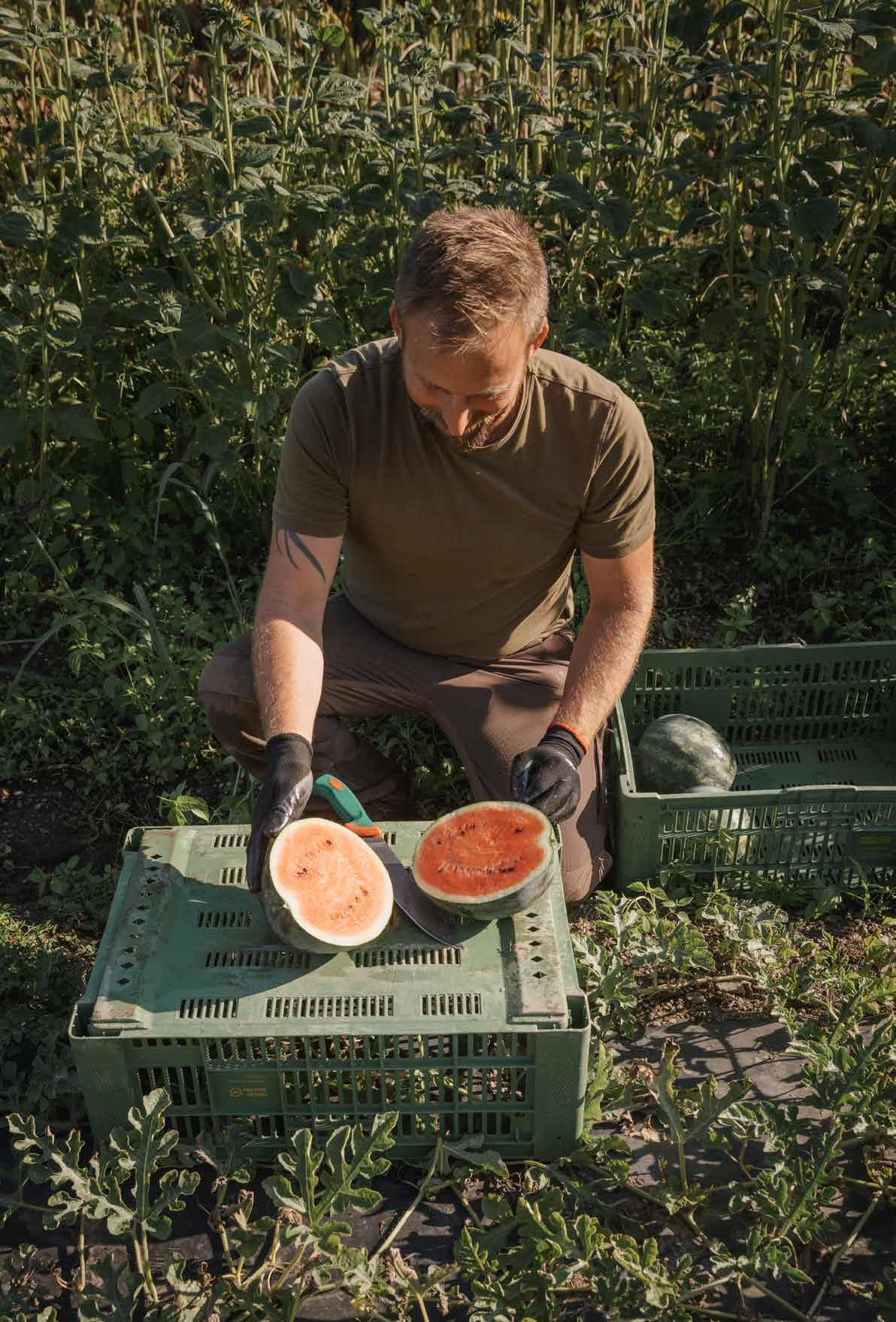
Climate change makes it possible: sweet potatoes and melons have been available in Kufstein for several years. But what does global warming mean for local agriculture, aside from these culinary sunny sides? We spoke to Martin Strillinger, a third-generation vegetable farmer in Kufstein.
Once again, the chives are so crisp that the rolls jump through the whole kitchen when you cut them! No wonder, three hours earlier they were still in the field. Regional and seasonal nutrition is child‘s play for the people of Kufstein, as the vegetables grow here in the middle of the city.
With a cultivation area of 10 hectares, the Strillinger family has been supplying the city with freshly harvested vegetables, cut herbs and flowers.
In the beginning was the cow
In the early days of the Strillinger horticulture company in Kufstein, however, the focus was not on vegetables, but on dairy farming. The grandparents of the current company director kept a few cows, whose milk they sold to local customers from the farm. In addition, the grandmother also tended her home garden so diligently that it yielded more vegetables than the family needed. So Maria Strillinger started offering the surplus to her milk customers, which proved to be a viable business model.
Her son apparently inherited his mother‘s green fingers and, together with his wife Christine, he completely converted the business to vegetable growing. To this day, you can still see the senior partner Josef Strillinger sitting at the wheel of his tractor, still working – not a trace of rust or rest.
Martin Strillinger has been running the company since 2010, the third generation of his family to do so. He is supported by his parents, his wife, and even the next generation, aged seven and eleven, are already lending a hand. Although Martin always wanted to be a vegetable farmer, he first completed an apprenticeship as a bricklayer, eventually becoming a foreman. He can always make good use of the skills he acquired in construction in his own company, he says. >>
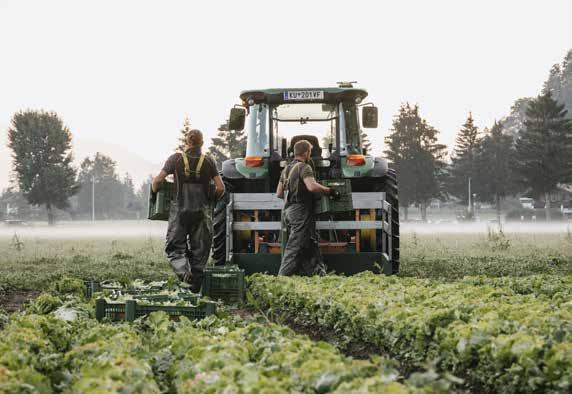

Agriculture in times of climate change
Many of Strillinger‘s vegetable stand customers can‘t believe their eyes when they see the melons and sweet potatoes that are produced locally. These fruits grow outdoors, not in a foil tunnel, mind you. That wouldn‘t have been possible in the past, Martin explains, but in recent years, the temperatures in summer have been so high that it has become possible to successfully cultivate such heat-loving field crops. Even delicate basil can be grown outside in the field during the summer months. In 2010, the last lettuce was sown at the end of July, but now leafy vegetables can be grown well into August.
So is Tyrol one of the climate winners? „Not at all,“ says Martin Strillinger, “extreme weather events are increasing significantly.” While the weather used to come and go, weather conditions are increasingly remaining stationary. When it rains, it rains incessantly, often for weeks, but good weather also lasts until the drought. In 2023, cold, wet weather in spring caused half of the potato crop in the field to rot, while summer was extremely hot and dry. The high temperatures are leading to more and more frequent hail storms, even in spring, which destroy plastic tunnels and plants.
Martin has now also taken out hail insurance, which is becoming increasingly expensive. In the past, heavy hail was so rare that it didn‘t make sense. He has also had to invest in an irrigation system to water his plants during the increasingly frequent droughts. All of this involves costs and additional
work, which he can only pass on to a very limited extent in the prices. After all, the people of Kufstein should still be able to afford their vegetables.
While many vegetable farmers grow and sell only eight to ten varieties, Martin Strillinger offers around fifty to sixty. This diversity requires more work, but brings advantages in the fight against pests such as the rice bug, which is increasingly causing problems due to warmer temperatures. His strip farming concept involves alternating narrow strips of cropland to prevent pests from spreading. Weeds are controlled by ploughing and hoeing, and the soil is covered with green manure after the harvest – but manual weeding remains essential, even when temperatures exceed 30 degrees.
Martin Strillinger deliberately relies on a team from the region – a guarantee of quality and reliability. During the pandemic-related lockdowns, this decision proved to be an advantage: the harvest could be brought in without delay.
‘Employing local people is associated with higher costs, but what counts for me is treating all employees with respect. I also appreciate having a team that I can rely on at all times.’
Martin
Strillinger
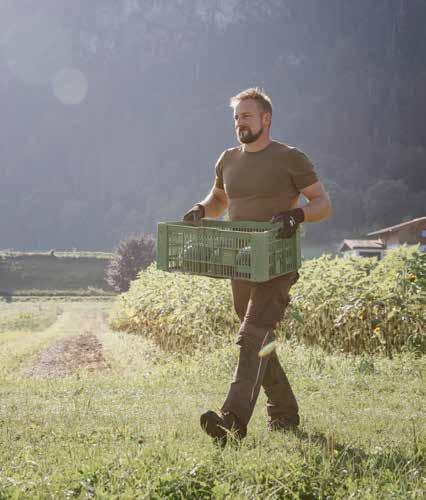
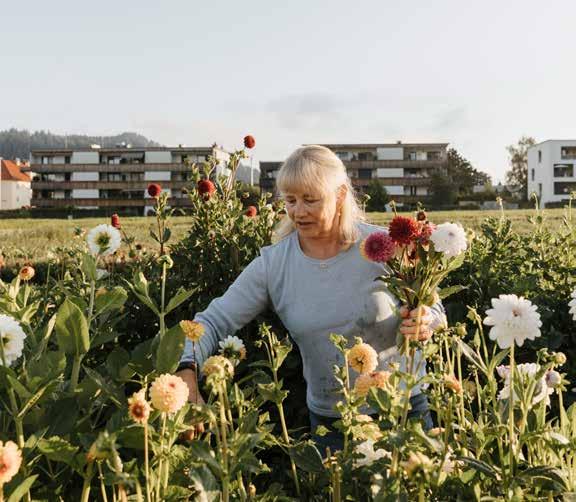
The regionality that characterises every area of his company makes his business not only more sustainable, but also more resistant to crises. A concept that shows how future security and social responsibility go hand in hand.
What does a regional vegetable farmer like Martin Strillinger want from politics? More EU-wide coordination of rules, for example. For example, a seed dressing that is banned in Austria because of an emergency licence in Germany has largely destroyed bean cultivation in Austria, which means that the beans are now imported from Germany.
Even in Austria, there are no uniform regulations: while investments in irrigation systems are subsidised in almost all federal states, this is not the case in Tyrol. Martin would also like to see more research initiatives for agriculture and sees great potential in innovative approaches such as biological weed control using laser technology.
One concern that he shares with many Austrian entrepreneurs is lower non-wage labour costs – so that small regional companies also have a secure future. After all, the next generation of Strillingers is already in the starting blocks. And who knows, maybe rice will actually be grown in Kufstein one day if the climate continues to change. The rice bug would be at least already here...
Special day at the Strillinger vegetable stand: every Friday, the Hinterschachnerhof offers additional regional cheese, sausage and meat specialities.
Scan the QR code now to discover which fresh vegetables are currently available! The harvest calendar provides you with all the information you need at a glance –quickly, easily and seasonally.
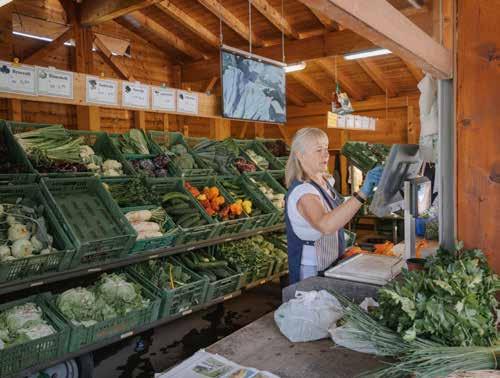

Regional. Culinary. Authentic.
The region comes to life here: in addition to fresh fruit, spicy cheese and fragrant bread, the markets in Kufsteinerland also offer artistic handicrafts. From lovingly crafted woodwork to hand-sewn textiles – local producers show what makes the region special. Between warm conversations and the taste of regional specialities, a special connection to the landscape is created. Every purchase supports the local economy, preserves traditions and contributes to maintaining Kufsteinerland as a vibrant meeting place for locals and guests.
Every first Saturday of the month, 9:00 am – 12:00 noon
A market with a taste of home: the farmers‘ market in Ebbs offers a variety of regional products - from freshly baked bread to hearty cheese. This is where rural tradition meets genuine craftsmanship. Buy directly from the producers, taste specialities and experience the real taste of the region.

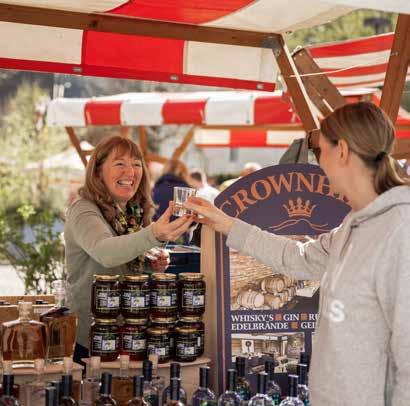
18 – 19 April 2025 | 3 - 5 April 2026
With the arrival of spring, the market tradition also comes to life again. The Easter market in Kufstein presents handmade artworks, fine regional specialities and the scent of fresh flowers. Between the arts and crafts and the culinary delights, an atmosphere is created that welcomes in the spring.
Fine wines from Austria and Italy
11 – 12 July 2025
Two days dedicated to wine: at the wine festival in the city park of Kufstein, winemakers from Austria and Italy present their best vintages. Wines from Kufstein‘s twin towns of Rovereto and Langenlois are also represented. The wines are served – traditionally – in Riedel glasses. Tyrolean specialities and Italian pasta dishes will be served to accompany the wines. Live music rounds off the culinary experience. Free admission.

30 – 31 August 2025
Culinary diversity in the open air: the street food market brings flavours from all over the world to Kufstein. Food trucks, international specialities and a lively atmosphere make this market a special experience. Colourful lights, exotic scents and a relaxed atmosphere invite you to discover new taste experiences.
04.09.2025
Craftsmanship, culinary delights and an atmospheric ambience – the Night of Craftsmanship and Indulgence transforms Niederndorf into a lively meeting place. Regional businesses present their range and provide insights into their work. Indulgence stations with homemade specialities invite you to try, while live music creates a special atmosphere.
03.10.2025
In Kufstein‘s city park, everything revolves around enjoyment and tradition. About 20 producers present regional specialities and traditional craftsmanship on this day. Cheese, bacon, schnapps and other delicacies take centre stage. At the same time, the shops in the city centre open their doors. The musical accompaniment will be provided by the group ‘Ebbser Kaiserklang’.
When the scent of mulled wine and roasted almonds fills the air, Kufsteinerland is transformed into a Christmas setting. Craftsmanship, traditional specialities and festive sounds make the region‘s Advent markets a place to meet. Between hot chestnuts and lovingly designed gift ideas, a real sense of anticipation for the Christmas season arises!
Christmas market in Kufstein city park | Wed – Sun 21 Nov – 21 Dec 2025
Christmas market at Thiersee lake | 14 Dec 2025
Pölvenzauber Bad Häring | 7 Dec 2025
Christmas magic at Kufstein Fortress | Sat - Sun, 30 November – 21 December 2025
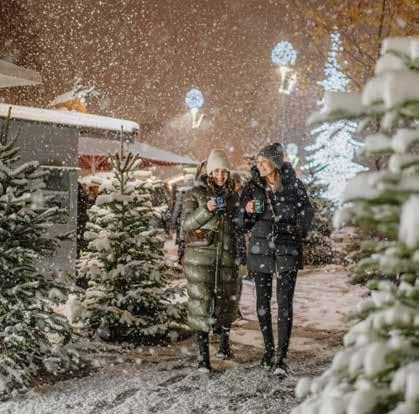

For Werner Zellner from Tyrol, the bathing season lasts 365 days a year. Regardless of temperature and season, he has been practising his bathing ritual at Kufstein‘s Hechtsee for over 20 years. In a personal conversation, he talks about the positive aspects of winter bathing, which has become a global trend.

When Werner Zellner started winter swimming in Lake Hechtsee in Kufstein more than 20 years ago, he was met with disbelief by uninvolved observers. Meanwhile, the situation has changed and Zellner has long since lost his exotic status. Today, he is seen much more as a trendsetter of an ever-growing community of winter swimming enthusiasts who meet at Kufstein‘s Lake Hechtsee to pursue their cold hobby. The municipality of Kufstein has quickly adapted to the new trend and now keeps the access to Lake Hechtsee, including the sanitary facilities, open all year round.
If you ask winter swimmers why they plunge into the cold water instead of sitting in front of the warm stove, you will get different answers. Some want to beat the ageing process, others appreciate the positive effect on the immune system or enjoy the endorphins after the dip.
Almost 25 years ago, Werner Zellner had a completely different approach to the topic of winter and ice bathing. Through his acquaintance with a Shaolin monk, he came into contact with the Chinese meditation and concentration and movement form Qi Gong.
The aim of Qi Gong exercises is to harmonise the mind and body by promoting and stabilising the energy balance. Fascinated by the 3000-year-old training method, which is still practised in Buddhist monasteries today, Zeller travelled to Tibet to deepen his knowledge. There he observed monks performing the ice bath ritual and became curious. The fascination for the cold shock has never left him since.
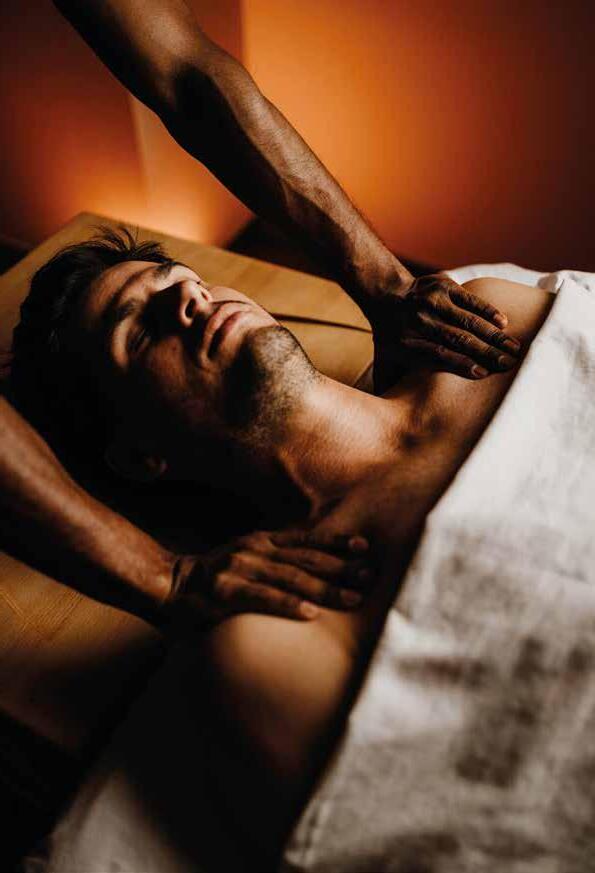


Soft purification, revitalizing detox, healing Panchakarma: The cures following the holistic concept of European Ayurveda ® balance body, mind, and soul. Based on many years of medical experience and the expertise of our EA ® pioneers. A retreat, which is carefully tailored to individual needs, that provides both strength and tranquility. Staying at the European Ayurveda ® hideaway is a holistic experience with yoga, meditation and Ayurvedic massages and treatments, blending relaxing luxury with the wisdom of the ancient Indian healing system. True to our motto „Life is Balance“.
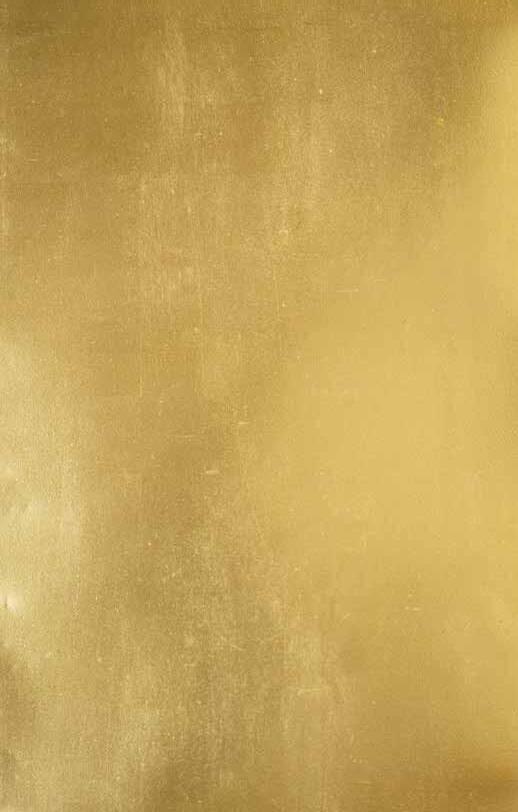
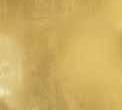

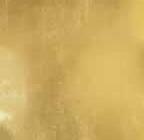







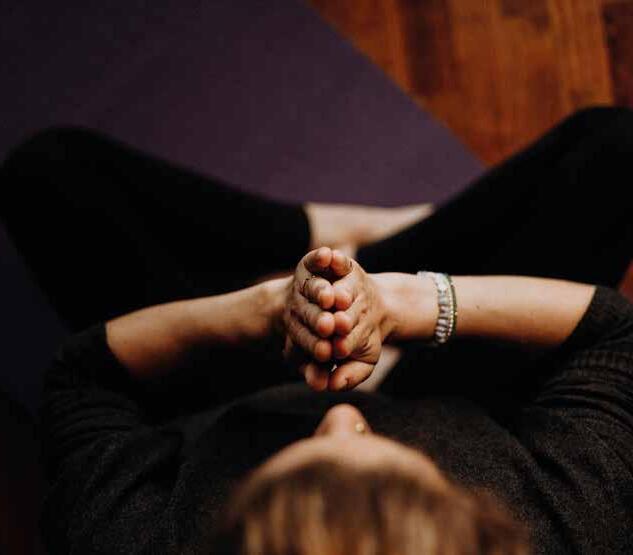

‘Of course it takes an effort to get into the freezing cold water,’ Werner Zellner admits that winter bathing is not exactly a wellness treatment at first. His most effective remedy against the icy cold of the water is to concentrate on his own breathing, which perception of the cold is directed inwards. Before each dip, Werner Zellner follows his own ritual, which consists of meditation techniques such as various mantras. As soon as he is in the water, the blood flow increases and the feeling of cold disappears. He doesn‘t even know how long he really stays in the water, he has never looked at his watch. When he feels it is enough, he leaves the lake, dresses warmly and stimulates various acupressure points, for example, the one for the kidneys, which are particularly sensitive to cold.
Originating on social media, winter bathing has now become a worldwide trend. A kind of social media icon is the Dutch extreme sportsman Wim Hof, known as the ‘Ice Man’. He holds several world records for enduring the cold and has repeatedly attracted attention through spectacular feats. In 2007, for example, he tried to climb Mount Everest wearing only shorts and sandals and had to give up at 7,400 metres due to a foot injury.
Like Werner Zellner, Wim Hof also relies on meditation and a special breathing technique that he calls the ‘Wim Hof Method’ and markets through books, smartphone apps and seminars. His technique is not without controversy, as there have been several deaths worldwide in which people have drowned. Wim Hof himself has never been prosecuted for this, though.
To ensure that winter swimming is a healthy pleasure, Werner Zellner advises always listening carefully to your body and taking it slowly. The easiest way to get into winter swimming, in his opinion, is to simply continue swimming after the summer and gradually adapt to the increasing cold.
A warm hat on your head protects your body from excessive heat loss, and whether you warm up extra beforehand or just get into the water, it‘s more a matter of personal preference. The most important tip, however, is to stay with yourself and not make a competition out of how long you can stand it in the cold water. A warm sip of tea warms the body from the inside after the swim and gentle exercise doesn‘t hurt either. If you want to be on the safe side, have a health check-up with your doctor in advance, especially if you have cardiovascular problems.
A cool head instead of hot hype
Werner Zellner suspects that he owes his indestructible health, among other things, to the daily cold shock in Lake Hechtsee. But basically he simply enjoys that deep feeling of satisfaction that overcomes him every time after bathing. Probably a result of the many endorphins that released by the cold water. At the same time, he warns against uncritically believing everything that is said about the positive aspects of winter bathing since it has become a global trend.
Social media in particular are competing with each other to present the advantages of winter bathing. It is said to halt the ageing process, combat depression, boost the immune system and even help you lose weight. Walter Zellner considers all of this to be typical exaggerations of our time, which is always chasing superlatives. When he has worries and problems, he still has them after winter swimming, but he admits that the cold water really does lead to more clarity in the head and more relaxation overall – but it is not a panacea.
The trend towards winter swimming has given Kufsteinerland another winter attraction, thanks to its lakes. ‘From the slopes to the lake’ is the motto for those who want to cultivate their inner frog and can‘t get enough of the wet element in any form.
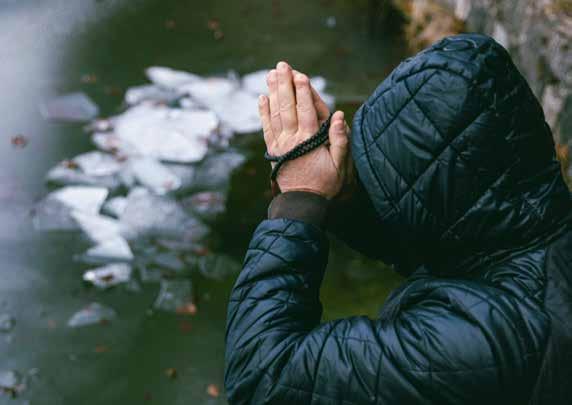

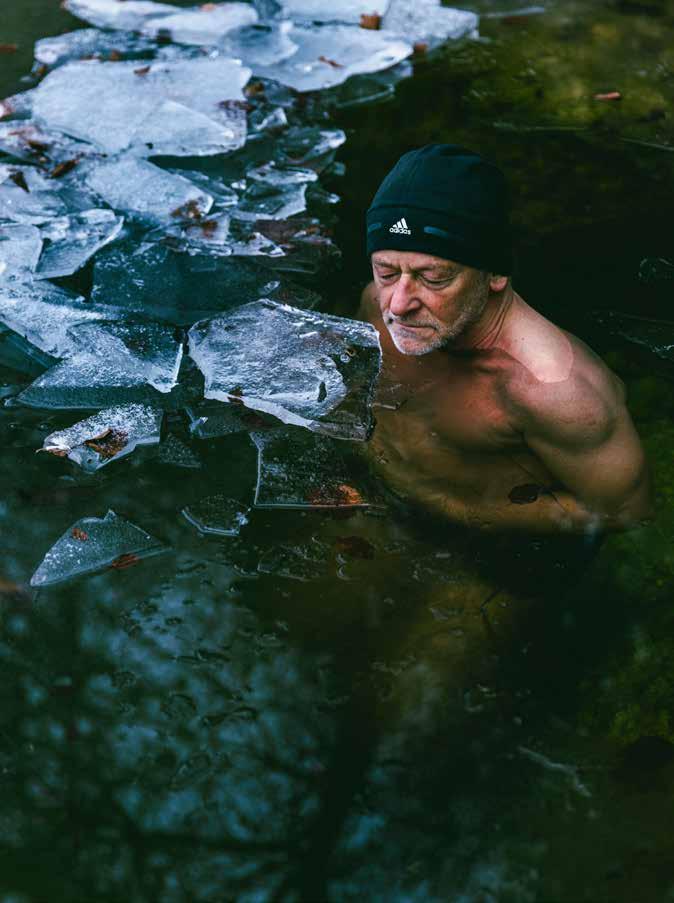
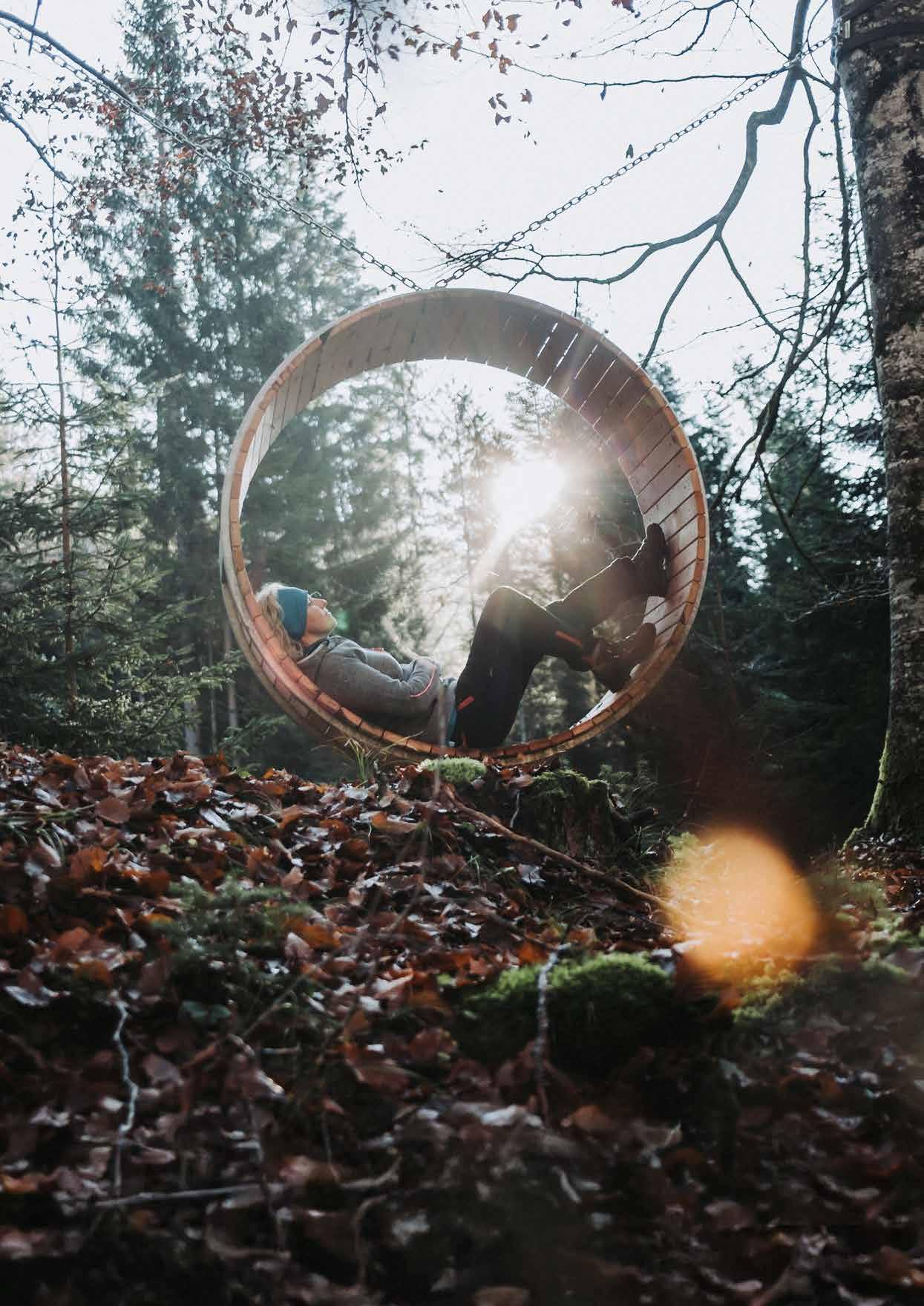
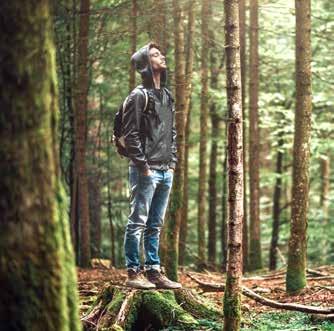
Immerse yourself in nature
Forest bathing in Hinterthiersee
Hinterthiersee forest opens up a world that allows you to forget the daily grind. As you bathe in the forest, you can feel the soft ground under your feet, hear the rustling of the leaves and the humming of the bees. The guided tour takes you through towering trees, past clearings and a stone labyrinth that symbolises the path to your inner centre. Breathing exercises and moments of silence allow you to slip into a deep relaxation – the calming power of the forest becomes palpable.
Starting point: Hinterthiersee village square
Address: Dorf 25, 6335 Thiersee
Note: free parking, the signposted Modalrunde cycle route starts from there.
Take a deep breath of nature
Four places, one mission: recharge your batteries and feel the power of nature.
Kufsteinerland is full of places that bring the body and mind into harmony. Sometimes lively and vibrant, sometimes quiet and contemplative – nature here shows itself in all its diversity. Whether deep forests, bubbling springs or impressive waterfalls, each of these places of power radiates its own special energy. Those who engage with it immediately feel how everyday life fades into the background and a feeling of calm and relaxation sets in. These are places where you can withdraw, consciously experience nature and recharge your batteries.

In the untouched mountain world of the Kaiser Mountains, the source of life bubbles tirelessly and clearly – a place that refreshes and inspires. The ‘Riegen-Bründl’ is picturesquely situated by the wayside, surrounded by sunny meadows and dense forests. Those who stops here can feel the power of the water immediately: fresh spring water that cools the throat and invigorates the mind. The intense flavour and purity of the water make the moment something special – a sip of pure nature, straight from the heart of the Kaiser Mountains.
Starting point: Kaiserlift valley station, Kufstein
Note: Take the Kaiserlift to the Brentenjoch mountain station. From there it takes about 20 minutes to hike to the Lebensquelle, follow the signs for ‘Duxer Alm’.
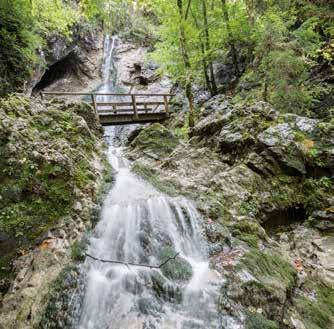
The waterfall in Bad Häring inspires with its wild, natural beauty. The air is filled with fine water particles that invigorate the senses and have been shown to clear the respiratory tract. Surrounded by a rustic forest, the splashing of the water becomes a meditative soundscape. The path there leads along a gentle stream – an ideal excursion for the whole family. The place of power itself is a place that transmits the vitality of flowing water to body and mind.
Starting point: Bad Häring town centre
Address: Dorfstraße 24, 6323 Bad Häring
Note: Follow the signs for the waterfall trail (Wasserfallweg), approx. 30-minute walk to the waterfall.
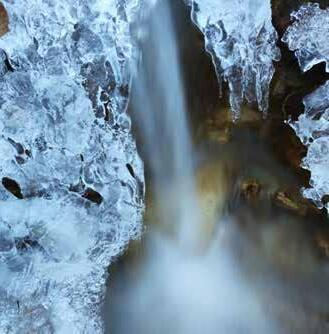
When temperatures drop, the waterfall in Ebbs freezes into a fascinating sculpture of ice and silence. The thundering water masses give way to a shiny, crystal-clear surface – a natural spectacle that breathes calm and contemplation. The winter landscape appears as if frozen in time, every breath is clear and fresh. Those who linger here feel the power of nature in its most silent form and can, just like it, pause for a moment and gather new energy.
Starting point: Car park at the Ebbs Zoo of Curiosities Address: Wildparkweg 6, 6341 Ebbs
Note: From there, it‘s about a 15-minute walk in the direction of the Nikolauskapelle. The waterfall is signposted.

The house at 19 Unterer Stadtplatz really has a lot of stories to tell. It is at least 500 years old and, in various forms, has been a popular meeting place for the people of Kufstein. When the ‘old lady’ threatened to collapse, Alexander Drastil and Thomas Bodner were on hand to revive the venerable establishment with an innovative concept. We hear the story of someone who has seen and heard a lot, in the heart of Kufstein.


In the in-house patisserie, Lisa-Marie Drastil reveals the secret of the legendary plum dumplings. Step by step, she shows how this speciality is made – a sweet tradition you can recreate!
Simply scan the image with the Livi AR app.
App download on page 4.
There‘s no question that the last few years have been exhausting for me. The construction noise, the heavy machinery, the dust –at times, I felt an emptiness inside and had no idea how to fill it again. My innermost being was taken from me, the old beamed ceilings torn down and replaced with modern concrete ceilings.
More than just a facelift:
functionality behind historic walls
One thing must be emphasised, however: the work was carried out with great care. My great history was always respected. Today it is still visible in the entrance area of the hotel. Here, a Gothic vaulted ceiling spans the entrance. Even the décor from that time has been preserved. I was also treated with care in the cellar. During the renovation, an old stone floor was uncovered. Over four hundred years ago, people dragged these stones from the River Inn to the lower town square.
For centuries, I was able to lean against the back of the city walls. Parts of the wall can still be seen in the basement today. As can an opening in the Zwinger wall, the second wall in front of the city gates. This created a connection between me and my younger brother, who was rebuilt on the Marktgasse side. We have a considerable age difference, but we complement each other very well.
A place to meet:
old and new in symbiotic combination
The kitchen of the Kaffee Platzhirsch is located over there, as are the laundry and other utility rooms. One thing has to be given to the new residents of the building. They have taken care to provide for me as well as possible, which was a real challenge during the construction period. I was to be made as usable as a modern building. They didn‘t want to do without light, heating and water, but the pipes were to remain invisible. Meanwhile, I am well connected in secret and offer every comfort as a hotel.
passion to the ‘love brand’
Authenticity as a core value
The Drastil family has created a tourism product that touches people and stays in their memories. In a highly competitive market, they focus on authenticity and a deep emotional connection to their guests. They believe that only what is familiar to us can inspire enthusiasm and loyalty. They run their business with passion and it is their passion that makes the difference.
The Platzhirsch is their flagship and combines traditional Austrian hospitality with a unique history. The revitalisation of the historic building and the futuristic new construction show the courage of the family, who in Thomas Bodner found a strong supporter. The central location in Kufstein and the diverse gastronomic offerings make the Platzhirsch special. This is how the Drastil family manages to position their company as a ‘love brand’.

All in all, I am very satisfied, but the term ‘facelift’ would not go far enough to describe the profound changes. On the contrary: my face – the side facing the lower town square – remained almost unchanged. But my inner values were brought up to date. Today, I house fifteen rooms for guests from all over the world, including a fabulous penthouse with a view of the Festungsberg. And on the ground floor, the same things are happening again that I have been accustomed to for centuries: you can hear people laughing, they are exchanging ideas, they are connecting with each other.
From ‘Goldener Hirsch’ to ‘Platzhirsch’:
A new era
Today I am the ‘Platzhirsch’, for a long time I was the ‘Goldener Hirsch’. Even today, people still talk about the ‘Hirschenkino’, which has long since left my premises. And they tell of legendary nights that they spent in the ‘Hirschenkeller’. I love reminiscing and I am even more delighted when we create new memories together. I am ready – revitalised and full of energy.
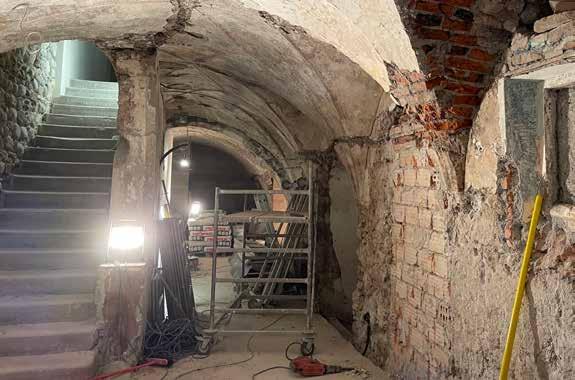

When stories become history.
The house at Unterer Stadtplatz 19 can look back on a long history. Since 1896, the local building authority has occupied the building, which was owned by the Maierhofer family and operated as an inn. During the renovation by the Bodner Group, an expert opinion revealed that parts of the building date back to the 15th century. The thick foundation walls, which are over 500 years old, are particularly impressive – a real piece of the city‘s history!
history at
14th century: Construction of the city wall
15th century: Construction of a threestorey Gothic building.
1504 Fire that caused extensive destruction
16th century: Gothic reconstruction: the ruined corner of the beam was replaced on the ground floor by a continuous vaulted ceiling. A light well, which still exists today, was integrated.
1703 Devastating destruction due to a second fire
18th century: Baroque reconstruction: the southern façade is restructured. The rooms are fitted with Baroque stucco ceilings. ‚Dippelbaum‘ traditional Austrian ceilings are installed.
1896 Outbuildings are constructed: three vaulted cellars, stables, two Wurstleoni restaurants and a smokehouse.
1901 Conversion of two attic rooms
1902 Billiards room and veranda built
1912 Construction of a new dining and cinema hall on the first floor of the annexe.
1960 Conversion of the ground floor and basement for the Austrian Credit Institute A.G. The restaurant on the first floor remains intact.
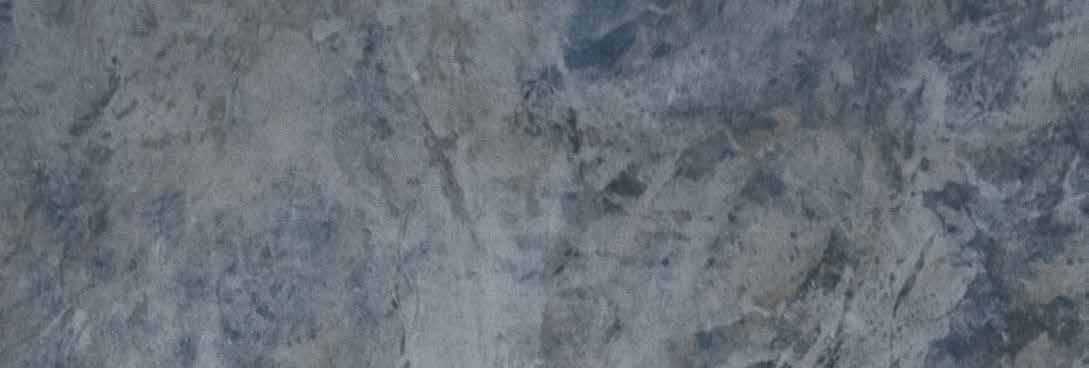
Experience the middle ages: old walls, hidden corners and secret towers. Exciting museums, a magnificent view and dark dungeons.On the fortress Kufstein there are a lot of exciting things to discover.
1961 A bar is set up in the cellar.

Always worth a visit.

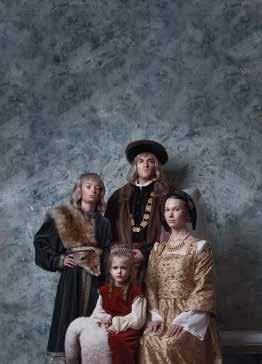
20
orchid species enrich the diversity of flora in the Kaisergebirge nature reserve.
1893
In 1893, the Hofinger spring was tapped to supply the town of Kufstein with fresh drinking water.
289
60
bird species, including golden eagles and peregrine falcons, find their habitat in the Kaiser Mountains.
28,000
The bones of cave-dwelling bears from the Tischofer Cave in the Kaisertal, where traces of early humans were also found, are 28,000 years old.
282
The Kaiseraufstieg to the Kaisertal valley comprises 282 steps and leads to one of the most beautiful hiking regions in Tyrol.
Kufsteinerland covers an area of 289 square kilometres. Only around a third is developed. The rest is untouched nature.
The term ‘Kaiserwetter’ (emperor‘s weather) is often associated with Emperor Franz Joseph I, who particularly appreciated sunny weather during his stays in Tyrol.
2,344
The ‘Ellmauer Halt‘ rises 2,344 metres high as the highest peak of the Kaiser Mountains.
1,500
1,500 cattle are driven down from the mountain pastures into the valleys in Kufsteinerland every year!
4,948
The Heroes‘ Organ is the largest openair organ in the world, with 4,948 pipes.
15
15 Gault & Millau toques and 13 Falstaff forks have been awarded to the restaurants and inns in Kufsteinerland.
820
Kufstein Fortress is 820 years old and was first mentioned in a document in 1205.
It will be really loud and scary when the Perchten return to Kufsteinerland in 2025.
Traditionally, the Perchten processions take place around 5 and 6 December. During this time, the Perchten groups complete a large number of performances. If you keep your ears open, you won‘t be able to miss them!
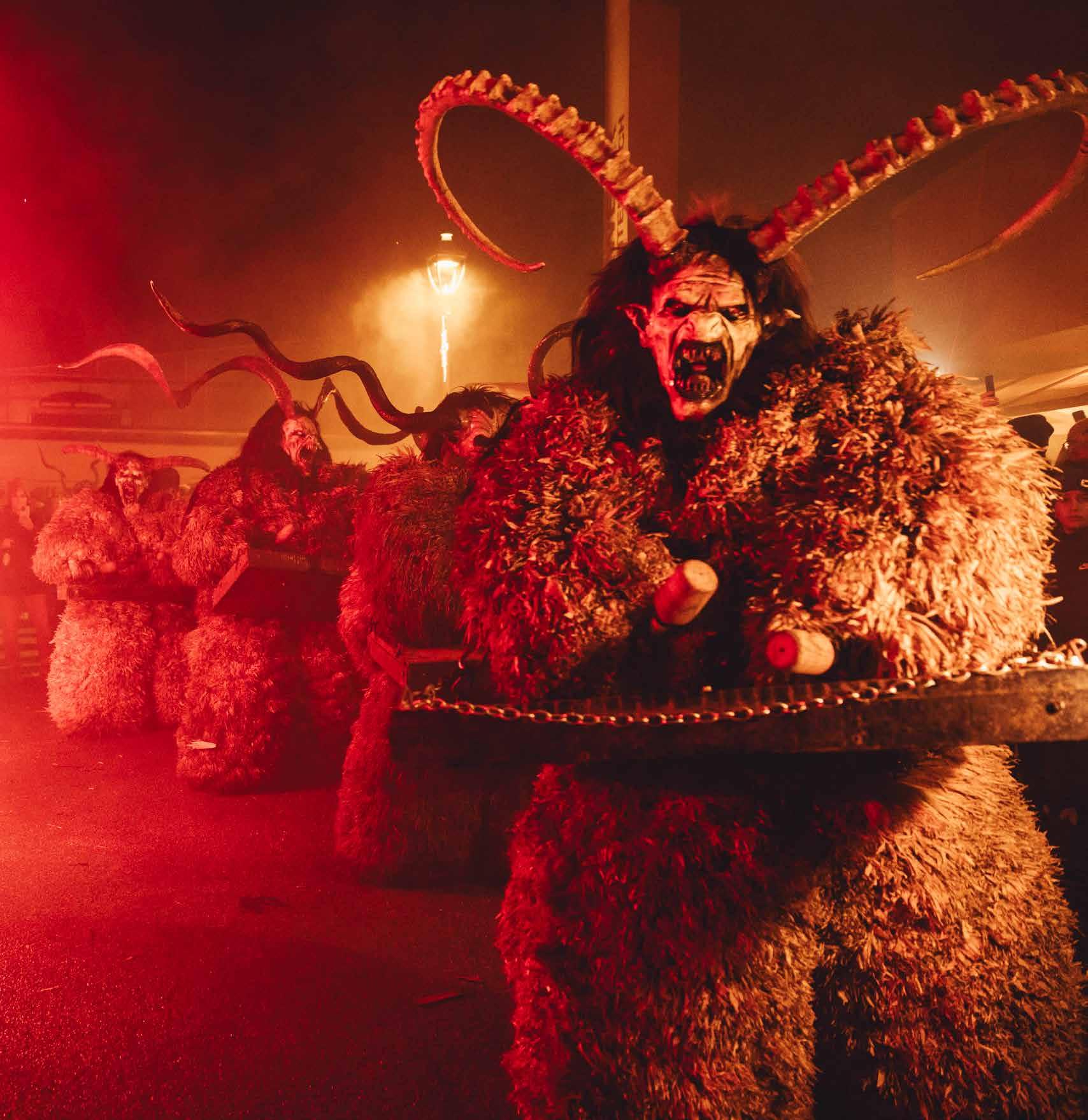
Perchten groups are living proof that young people do not turn their backs from old traditions, but rather see themselves as preservers of customs, while boldly embracing new interpretations –much to the delight of their large fan base.

The exact origin of the Perchten is not known. Some researchers see their origin in pagan customs or associate their beginnings with the medieval mythical figure ‘Frau Perchta’. What is certain is that the Perchten have been documented in Tyrol since the 17th century and play an important role in the run-up to Christmas and during the twelve nights after Christmas. Nowadays, the wild fellows are an integral part of the traditional calendar.
With lots of noise against evil winter spirits
No matter how uncertain their origin, their task has been clearly defined since the Romantic period of the 19th century: to drive out the evil winter spirits. This happened in different ways back then, varying from region to region, and it is no different today. In Kufsteinerland, which geographically belongs to the Tyrolean lowlands, the ‘Peaschtln’, as they are called here, make as much noise as possible in their homemade robes and carved masks to do their job.
In this country, the Perchten take to the main stage at the beginning of December in particular – in keeping with an old tradition. In the wintertime, when the farming work took up less time, there was more room for other activities. Before and on St. Nicholas Day on 6 December, sometimes as companions of St. Nicholas, at parades or at specially organised Perchtentreffen (Perchten gatherings), the Passen, as the Perchten groups call themselves, show off their skills. The performances range from traditional shows without props to modern interludes and pyrotechnic shows. What they all have in common is the preservation of tradition, albeit with a modern twist.
Think only winter is Perchten season? Far from it!
Anyone who thinks that after these days the Perchten retreat to their well-deserved summer sleep is sorely mistaken. Rather, as a member of a Perchten association, you are active almost all year round. In Kufsteinerland, there are a number of Perchten associations that have dedicated themselves to the old tradition – despite the fact that they are now active almost year-round, as Mario Rangger, deputy chairman of the Dompfpass Thiersee, reports: ‘We are active in and for the association almost all year round. The membership fees are not nearly enough to cover our high expenses, which is why we organise club parties and look for new sponsors. Dates for performances and Perchten gatherings have to be agreed and everything coordinated. The real work begins in mid-September, the intensive ‘Kammalzeit’.’
Off to Kammal...
Before the Perchten retreat to ‘Kammal’, as the Perchten‘s club house is affectionately known, they have to go out. The dedicated members of the club travel to Italy and throughout Austria to get loads of corn husks for their elaborate costumes. It‘s no easy task, because although the threshing waste can usually be collected free of charge, the farmers often postpone the threshing at short notice, and sometimes the weather can also throw a spanner in the works. Spontaneity is therefore required, because without violins there can be no costumes. Once they arrive home, the corn leaves begin to dry. This can take up to two weeks, depending on the condition of the corn. Only now does the main work begin: the elaborate sewing of the Perchten costumes.
Organisation is everything
Divided into groups, the husk-hewers now get to work on their costumes two to three times a week. They are folded sheet by sheet into bundles, and then the seamstresses get to work. ‘Usually only a few members or the chairman sew alone,’ reveals Daniel Eschlböck, chairman of the Hexenkopf Pass Langkampfen, ‘and for several reasons. On the one hand, it is exhausting and, on the other hand, the robes must be of a piece – after all, the aim is to be able to recognise the different ‚Passen‘ and their peculiarities by their costumes.’ The Perchten do not reveal the last secrets of sewing.


The unique costume of the Perchten is carefully handcrafted from corn husks.
Just scan the image with the Livi AR app. App download on page 4.
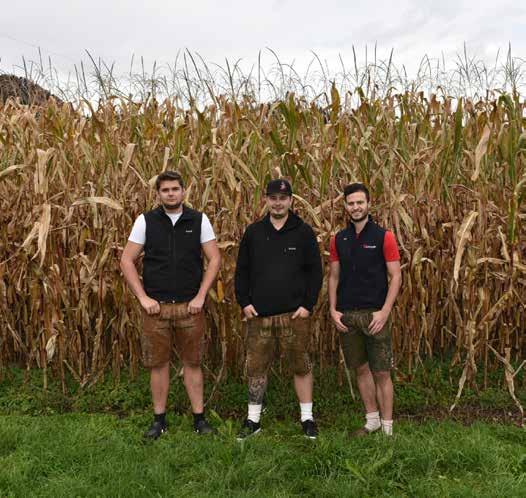
Even though they are not in direct competition and invite each other to Perchten gatherings, not everything is revealed. What is certain is that the bundles are sewn onto high-quality work trousers and parkas with a sturdy wax thread. Chains and holders for the tanks have to be incorporated and braces attached. It takes about 24 hours of pure sewing time to make a Perchten costume. Up to five costumes are made each year, while others are carefully repaired. There is never enough time, no matter how early the production process begins.
They have between six and twelve different percussion patterns in their bag. Their repertoire ranges from traditional to modern and must be carefully rehearsed in advance. This is the only way to ensure that the audience is amazed every year. By the way, it is absolutely taboo to steal the Perchtl beat from another group – even the most peaceful Peaschtl would be unable to contain their rage.

A brief ABC of traditional costumes
Pass Name of the Perchten group
Kammal The name of the Perchten‘s club house
Bratschen Corn husks, threshing waste
Gwandl Perchten costume
Larve Perchten mask
Tamper Beat, tap
Perchtltakte The pattern of beats of the Perchten
Glockinger Bell ringer
‘It does happen that the costumes are worked on right up to the last minute, but we manage it year after year.’
Daniel Eschlböck on the ‚final push‘ of the preparations.
Hand-carved and horribly gruesome
They are hand-carved, the masks, and in the best case from the hand of the same carver. They also have to be as fearsome as possible, after all, the aim is to effectively drive out evil spirits. The masks of the Passen are as unique as their costumes and are highly recognisable.
Time for rehearsals
While the costumes are being made, the performance itself is being fine-tuned. Anyone who has ever seen a Pass in action knows that the choreography is sophisticated. From start to finish, everything is timed – in the truest sense of the word. Because it is the beat that is the focus of attention, and this is where the ‘tamperers’ come into play. They are the ones who make an almighty din on canisters and tanks that they have converted themselves.
On your marks, get set, go!
In December, there is no holding back. Numerous helpers – from bus drivers to dressers – do a great job to ensure the perfect Perchten performances. They travel from event to event in converted ski buses without seats or on tractor trailers. The wild hustle and bustle begins, accompanied by a whirling witch, fire-raisers and the Glockinger – a feat of strength that requires stamina.
No shortage of young recruits
There is no need to worry about the tradition dying out. The legacy will be passed on, but the young have to prove themselves before they are allowed to participate as Perchten. ‘Newcomers must first go along as helpers on trial. Only when we feel that they fit in, will they be considered for admission,’ explains Michael Kapfinger, chairman of the Bleibach Pass Langkampfen. The Perchten and their many helpers are paid in kind – food and drink instead of money. No sooner are the costumes stowed away than the preparations begin again, because next December is sure to come.
NHow Martin Leutgeb and the Erl Theatre Company bring their passion to the stage o village without a passion play –no passion play without a village
The Passion Play Erl is much more than a tradition – it is the heart of the village community. For over 400 years, generations have taken to the stage together, keeping this unique cultural heritage alive. With the new production in 2025, a new chapter is now opening, written by director Martin Leutgeb together with the people of Erl.

From the outset, Leutgeb has sought personal interaction with the people of Erl. He approaches them, listens, absorbs their thoughts and experiences. His goal: to stage something great together with the village community. The rehearsals are not just artistic work, but a process that allows the community to grow together further.
Even the youngest children experience the Passion up close, growing up with the plays and taking on new roles over the years. Young people become apostles, adults embody central figures such as Pilate or Mary, and many remain involved as extras, craftsmen or organisers well into old age. In 2025, more than 600 participants will bring the story of suffering and hope to the stage with new compositions by Christian Kolonovits – a major collaborative project that once again makes Erl a place of deeply felt tradition.
The Passion Play Theatre in Erl, opened on 14 June 1959, was specially designed for the summer Passion Plays. With 1,500 seats, it is the largest parterre theatre in Austria. The 37-metre-high architecture and the 400-square-metre stage offer a unique acoustic and visual experience. A modern orchestra pit, an organ with 2,000 pipes and a spacious art room complete the facilities. Ongoing modernisation optimises the visitor experience.
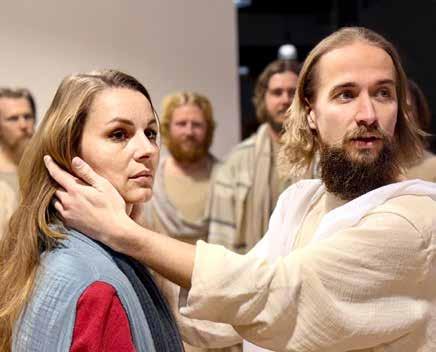
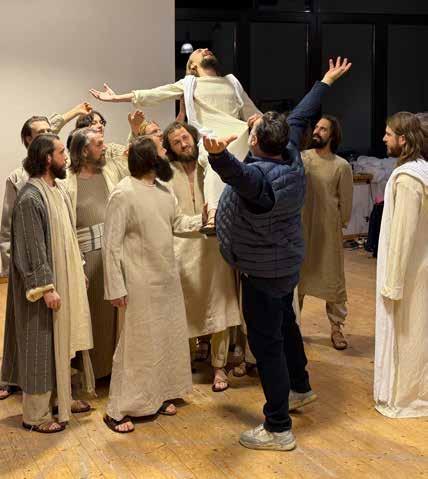
the community and family
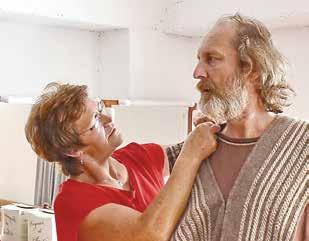
For decades, Maria Schwaighofer has been working behind the scenes to ensure that the 600 amateur actors have costumes, taking care of everything from sewing to organising the men‘s wardrobe. ‘It just happened that way,’ says Maria, who comes from Rettenschöss and came to Erl through her marriage. ‘You get to know the people, feel this community – it touched me.’ While her husband was active in the high council, she devoted herself to the costumes. ‘Once they persuaded me to join the cast, but I‘m not really a stage person,’ she says with a grin. Her children and grandchildren also perform on stage. Even at 73, she remains committed: ‘Sewing on buttons is something the young ones can‘t do anymore,’ she says with a wink. Without people like Maria, the Passion Play would not be what it is today –a celebration of community.
Passion play in Thiersee 2028
The Passion also has a long tradition in Thiersee. Since 1695, the people of Thiersee have kept their promise to stage the Passion Play every six years. In 2022, the plays impressed with around 200 amateur actors and impressive stage sets, embedded in the picturesque backdrop of Lake Thiersee. The next Passion Play will take place in 2028 and shows how deeply rooted the tradition is in Tyrol.
23 years as a Christ figure
Erwin Thrainer left his mark on the Passion Play Erl as an actor, director and organiser. He first took to the stage in 1959 at the age of five. ‘I went with the crowd that time – it was incredibly exciting.’ In 1979, he took on the role of Christ at short notice. ‘I hadn‘t had a single rehearsal as Christ by then. I only knew the text from rehearsals as John.’
Despite this challenge, he grew into the role: ‘I didn‘t just want to play Jesus, but to portray him as a human being.’ In addition to his work on stage, he was involved as a di rector, managing director and in public relations. ‘During that time, I lived for the Passion Play.’ His commitment made him a formative figure in the Passion Play Erl.




Claudia Dresch moved from Zillertal to Erl in 1980 – and immediately sensed the special atmosphere of the Passion Play. Five years later she was on stage for the first time.

‘The intensity with which the people of Erl did it was overwhelming.’ Later she took on roles such as Martha and Veronica, became involved behind the scenes and was elected to the committee in 1996. From 2009, she was responsible for public relations.
Her motto: ‘Every contribution is valuable – whether on stage, in traffic or cleaning.’ For Claudia, the Passion Play is much more than a play: ‘You have to feel it. For the people of Erl, it is part of their lives.’
The future of the Erler Passion
Florian Schindlholzer belongs to the young generation of Passion play actors. He first took to the stage in 2013, and played the baby Jesus in 2019. He will return in 2025 with a speaking role – as John, Jesus‘ favourite disciple. ’I felt very honoured when I was offered this role.’ His family is deeply rooted in tradition: his father plays Lazarus, his mother and brothers are active among the people, and his grandparents have also participated. ‘It‘s about theatre and community. “You can have fun with everyone,” he says with a wink.
Despite the fun, Florian takes his role seriously. The ban on alcohol during the play is a matter of course for him: ‘Anyone who breaks it has to pay two euros into the treasury – but hopefully that won‘t happen to me,’ he says with a grin. In addition to his passion, he also has ambitious goals: as a student at the Higher Technical Institute for Construction, Informatics and Design, his focus is on graphic and communication design.
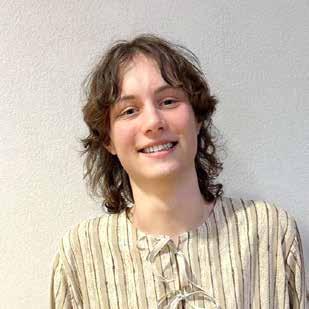
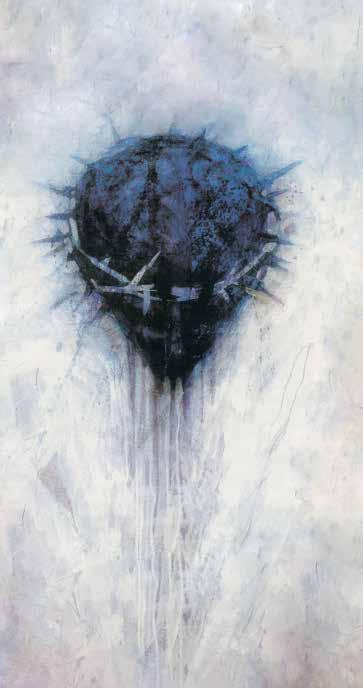





Sometimes things are just made for each other: a strong mountain cheese and sweet grapes, which create a perfect balance with their fruit acid. A creamy soft cheese and a hint of honey, which highlights the mild flavour. And – most importantly – the pleasure of cheese and a bike or e-bike ride through the golden autumn landscape in Kufsteinerland.
Acycle path winds its way through the autumnal landscape, where the warm sunlight bathes the leaves of the trees in bright gold, red and orange. Cyclists and ebikers will find everything their heart desires here, with kilometres of cycle paths taking them from lush green meadows into fragrant forests. In Kufsteinerland, you can experience nature with all your senses: the mossy forest scent, the earthy aroma of the undergrowth, the smell of alpine herbs – they prepare the palate for the taste experience to come.
Themed ‘pedalling and feasting’, you can experience a very special break in this region, because the Kufsteinerland has a remarkably high density of alpine cheese dairies and alpine dairies and thus a large number of easily accessible excursion destinations for your next bike tour: ‘We are in an extraordinary cheese-making region here – our hay-fed milk is the Ferrari of milk varieties,‘ enthuses Evi Lechner, a trained cheese sommelier who also works for the Kaiserweis regional initiative.
Hay milk as nature‘s crowning glory
‘Some people think that milk comes directly from hay, but the process is completely different, of course!’ smiles Evi, who also gained insights into the art of cheese-making during her training at the WIFI Innsbruck. The region‘s hay-milk industry is now recognised as a UNESCO cultural heritage site. The cows graze quietly in the lush meadows that can be found everywhere along the side of the road. They are fed only fresh green fodder or hay, and in winter just a small amount of grain – but no silage. The result: milk with more nutrients and butter that is more yellow in colour.
Anyone who jumps at the chance to take part in a cheese tasting should be prepared to experience cheese with all their senses. Taste is subjective – what tastes good to one person may not necessarily appeal to another. However, there are techniques for professionally evaluating cheese that allow for an objective assessment of its quality. Each type of cheese has its own sensory characteristics: the rind, colour, texture and holes can be evaluated.


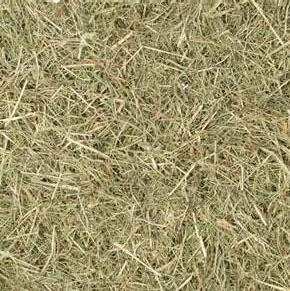

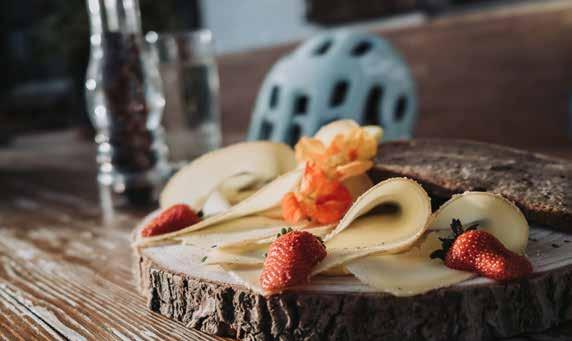
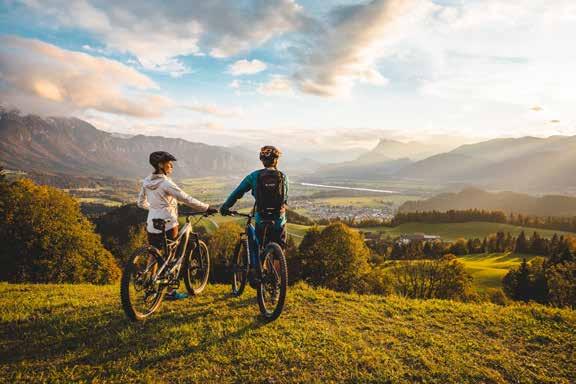













Perfect partners for hay-milk cheese
The topic of food pairing opens up a whole new range of possibilities: which flavours go perfectly with the cheese specialities? The possibilities are endless, and so the culinary diversity of the region becomes another adventure that not only inspires cyclists and bikers: the Kaiserweis initiative brings together a colourful variety of businesses from the region that enrich everyday life and holidays with a wide range of products.
The umbrella brand was created to help local producers make their products more visible. Under the motto ‘Experience regionality’, Kaiserweis unites the best businesses in the region and creates an authentic connection to the culinary quality of the Kufsteinerland. Goats and sheeps cheese also characterise the cheese landscape.
The alpine dairies and cheese dairies, as well as the Kaiserweis businesses, are very easy to reach by bike. The Kufsteinerland region offers well-signposted cycle routes that are always varied and can be made more challenging if you wish. Along the way, authentic alpine huts invite you to stop for a hearty cheese snack: ‘Ideally, you should take a piece of cheese with you in your rucksack – that‘s how it tastes best,’ advises Evi Lechner with a smile.




spacious sun terrace



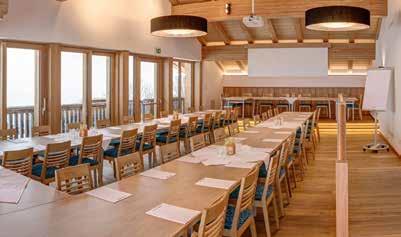




multifunctional winter garden for seminars, free wedding ceremonies or yoga events and much more

large adventure playground and the ‘ROSA Spieleland’ with indoor slide



Kufsteinerland is a real treasure trove for cheese lovers. The variety of cheese dairies is not only a best-practice example for aspiring cheese sommeliers, but also delights all those who enjoy fine food. A large rucksack for souvenirs is a must, because the alpine dairies and cheese dairies in this region have delicacies that you simply have to take home with you.

Green meadows, grazing horses and a mountain backdrop straight out of a picture book: the Oberbichlhof in Hinterthiersee is not just a riding centre, but a real paradise for horse lovers. Here, where Icelandic horses tölt across spacious paddocks and riding students train in a family atmosphere, the dream of living on the pony ranch comes true.
What began as an agricultural project has developed into a place where a passion for horses takes centre stage, thanks to the farm owner Sophia Labek. At just 17 years old, she took over the farm, brought her three horses with her and started the riding business. Today, the Oberbichlhof offers a spacious riding arena, modern stables and extensive pastures – everything a horse and rider could wish for. With a great deal of commitment, Sophia completed an agricultural apprenticeship as well as additional equestrian training to run her farm sustainably and professionally.
The Oberbichlhof is dedicated to Icelandic horses – known for their friendly nature and extraordinary gaits. ‘Icelandic horses are friendly and sociable. Thanks to these characteristics, they can easily live in a herd and do not need to be separated from each other in boxes,’ explains
Tobias, Sophia‘s husband and hoof care expert. In addition to the classic gaits of walking, trotting and cantering, Icelandic horses also master tölt and pace. ‘Tölt is particularly comfortable for riders because it is almost vibration-free. Pacing, on the other hand, is very fast – ideal for short sprints,’ adds Tobias.
There are currently 25 of their own horses at the farm, plus 15 boarded horses. Sophia and Tobias also breed, but training a young horse takes time. By the time a foal is around five years old and ready to be used as a school horse, it has spent a lot of time in the field – often with retired horses enjoying their twilight years there.
There are many places in the Kufsteinerland region that offer riding lessons:
Weberhof
Wiesenweg 5, 6336 Langkampfen +43 664 5159024 info@weberhof-langkampfen.net
Fun riding lessons for children aged three and up.
Salitererhof Riding School
Family Kronbichler
Riding school: Gießenweg 5a Farm: Wildbichlerstraße 19, 6341 Ebbs +43 650 7767738
Equine-assisted learning and a fun approach to riding for children.
Fohlenhof Ebbs
Schloßallee 27-29, 6341 Ebbs +43 5373 42210 info@haflinger-tirol.com
Riding lessons and everything to do with Haflinger horse breeding.
Kalkschmiedhof
Family Kolland
Oberndorf 98, 6341 Ebbs +43 5373 43420 johann.kolland@aon.at
Riding lessons in a family atmosphere.
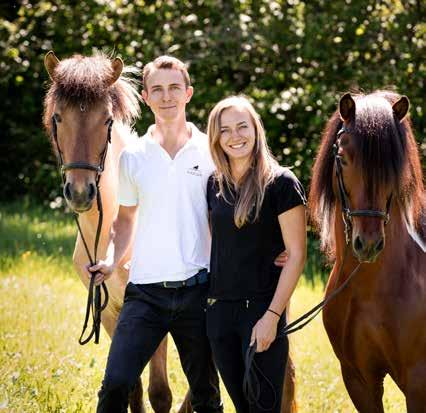
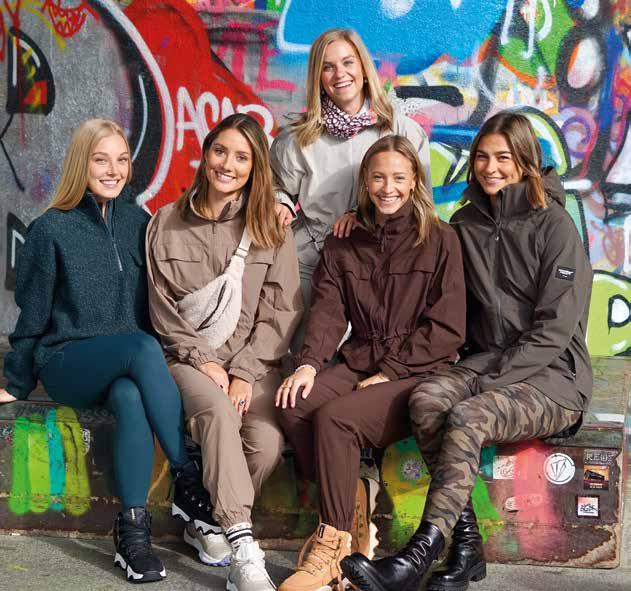
DISCOVER OUR LARGE COLLECTION OF T-SHIRTS AND HATS FROM OUR OWN BRAND
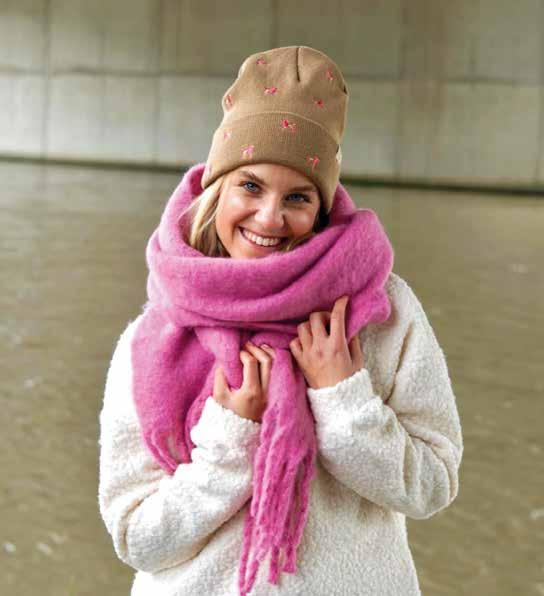
Hinterthiersee 39 I 6335 Thiersee +43 5376 5594 I info@sporthaler.at
www.sporthaler.at
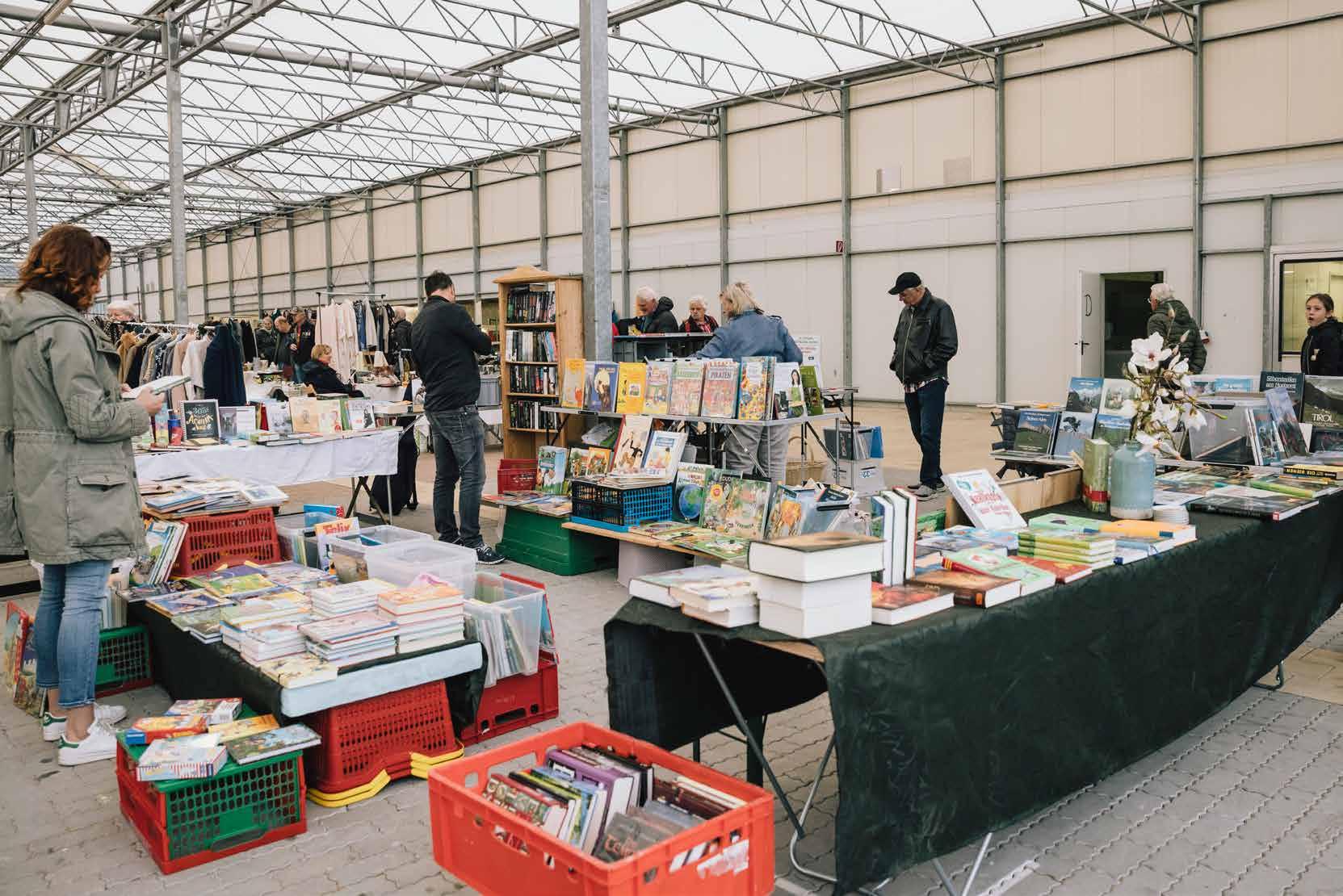
It has been running for more than 20 years and is well known far beyond the country‘s borders: the flea market at the Hödnerhof Arena in Ebbs. Between 100 and 150 exhibitors offer special rarities and look forward to new encounters and interesting conversations.
It‘s Saturday and at the roundabout after the Kufstein motorway exit, a sign for the flea market is already lit up and impossible to miss. Several arrows point the way to Hödnerhof, so that you don‘t miss the entrance. Once you arrive at the large area, countless market stalls and a very special atmosphere await visitors. Early in the morning, you can still see one or two exhibitors doing the last-minute preparations: things are being rearranged, staged and perfectly placed. A few visitors are also already present.
During the morning, the hall and, with good weather the outdoor area as well, fill up with people who are interested in browsing and, in the best case, buying. The range of goods on offer here could not be more diverse. From books to tools, pictures, jewellery, figures, crockery, instruments, clothing, furniture, toys, fruit, vegetables, bacon and sausage products, you will find a colourful collection of special items looking for new owners. All the rarities have one thing in common: they are not new, but they are well preserved. Since 2022, no new goods have been allowed to be offered here. That‘s not what the visitors who come here want. They are interested in higher-quality junk and special antiques. The stands also place a high value on sophisticated displays.
From market flea to flea market
Where does the flea market actually get its name? The word comes from the French ‘marché aux puces’, which means ‘market with fleas’. The beginnings of these markets take us back to 18th-century Paris. Used clothing that was rarely washed was sold there. So it happened that the odd flea made itself comfortable in the fabrics or directly on people. And because fleas can jump up to one metre, visitors to these markets often took one of the pests home with them, even if they didn‘t buy anything.
On weekends when the flea market is held in Ebbs, many of the exhibitors arrive on Friday afternoon to set up their market stand and prepare everything. They come from a wide variety of regions to attend this flea market. In addition to the nearby towns in Kufsteinerland, the main catchment area is, of course, Bavaria. But there may also be bacon from South Tyrol, enamel from Hungary, carpets from an Iranian or woven baskets from Slovenian exhibitors. Around half of the total number of stallholders are regular vendors here at the flea market, while others change regularly. The visitors are as diverse as the range of goods on offer demands. Many families come with their children, as do older people and those who simply see ‘Flohmarktln’ as a cosy pastime. This applies to exhibitors and visitors alike.
On our tour of the market hall, several exhibitors give us an insight into their lives as stallholders. Helmut Holzmann lives in Bavaria and has been represented at a wide variety of markets in Germany and Austria for more than 20 years. He uses the proceeds to supplement his pension a little, but primarily values the social aspect. He offers high-quality antiques, adapting his range to the location. ‘I sell completely different things in Austria than in Germany. Here, my range of goods consists mainly of carved wooden figures, some of which are religious collectibles.’ The
regional differences are extreme. Twenty kilometres further on, I wouldn‘t be able to offer these items. Nobody would be interested,’ reports Helmut. When asked about pricing, he says: ’You can negotiate with me. That‘s just part of the market, and I like that. It gets you talking, you meet new people, and that‘s why I love this hobby so much.’ After we leave Helmut‘s stand and stroll past the toys and clothing towards the book corner, we hear the sounds of an accordion. Someone who sells instruments can also play them and, without further ado, plays a serenade.
With these sounds in the background, we enter a stand where a variety of books are offered, especially beautiful children‘s books. The stall holder loves books herself and places particular emphasis on high-quality children‘s books whose content is intended to give young readers a message. From gardening to cooking and needlework, those interested in the flea market will also find a number of non-fiction books. Novels and crime novels complete the range of literature on offer. The titles cost between two and four euros on
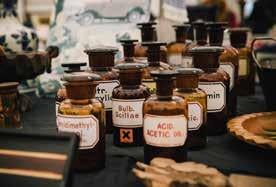
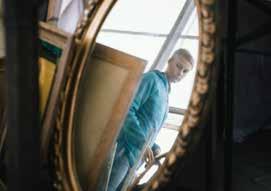
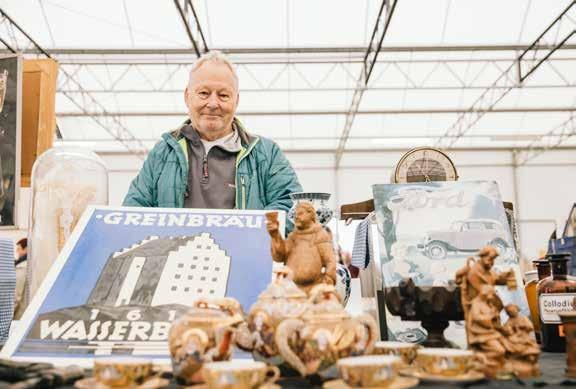



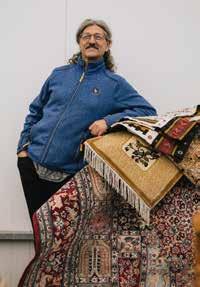
average, so that everyone can afford the book they want. Many people are browsing here and you can see that they really enjoy the ‘flea market’. ‘It‘s easy to make nice and interesting friends here, who often stay for a long time. I find that very enriching,’ says a visitor who comes here regularly. Alfred and Herta Lechner, who run a stand not far away with all kinds of rural finds, also share this view. Here you can find carved figures, crockery, decorative items and, above all, tools from times long past. The couple have been travelling from Schwaz to the flea market in Ebbs for several years and occasionally visit farmers‘ markets. They both enjoy the hours here, when they get to spend a lot of time in the fresh air, talk to people and often meet colleagues. ‘Others go to the pub for a beer, and we come here,’ Helmut says, summing it up with a grin.
On the Saturday we visit the flea market, it pours down buckets the whole time. The temperatures also leave something to be desired. Therefore, after taking a final look at the colourful hustle and bustle at the many different market stalls, we have a cup of tea at the bar. This is run by the Hödnerhof itself and serves as a popular meeting place. Many visitors start here with a coffee before they make their way through the rows of the flea market to stroll through the so-called junk and spend a few cosy and convivial hours.
The flea market at Hödnerhof in Ebbs takes place from February to December, always on two Saturdays a month. Of the small fee that exhibitors pay for the space rental, two euros are donated to a good cause. Every year, around 10,000 euros are raised in this way.
Information about the next flea market can be found on the Hödnerhof Ebbs website at www.hoednerhof.at

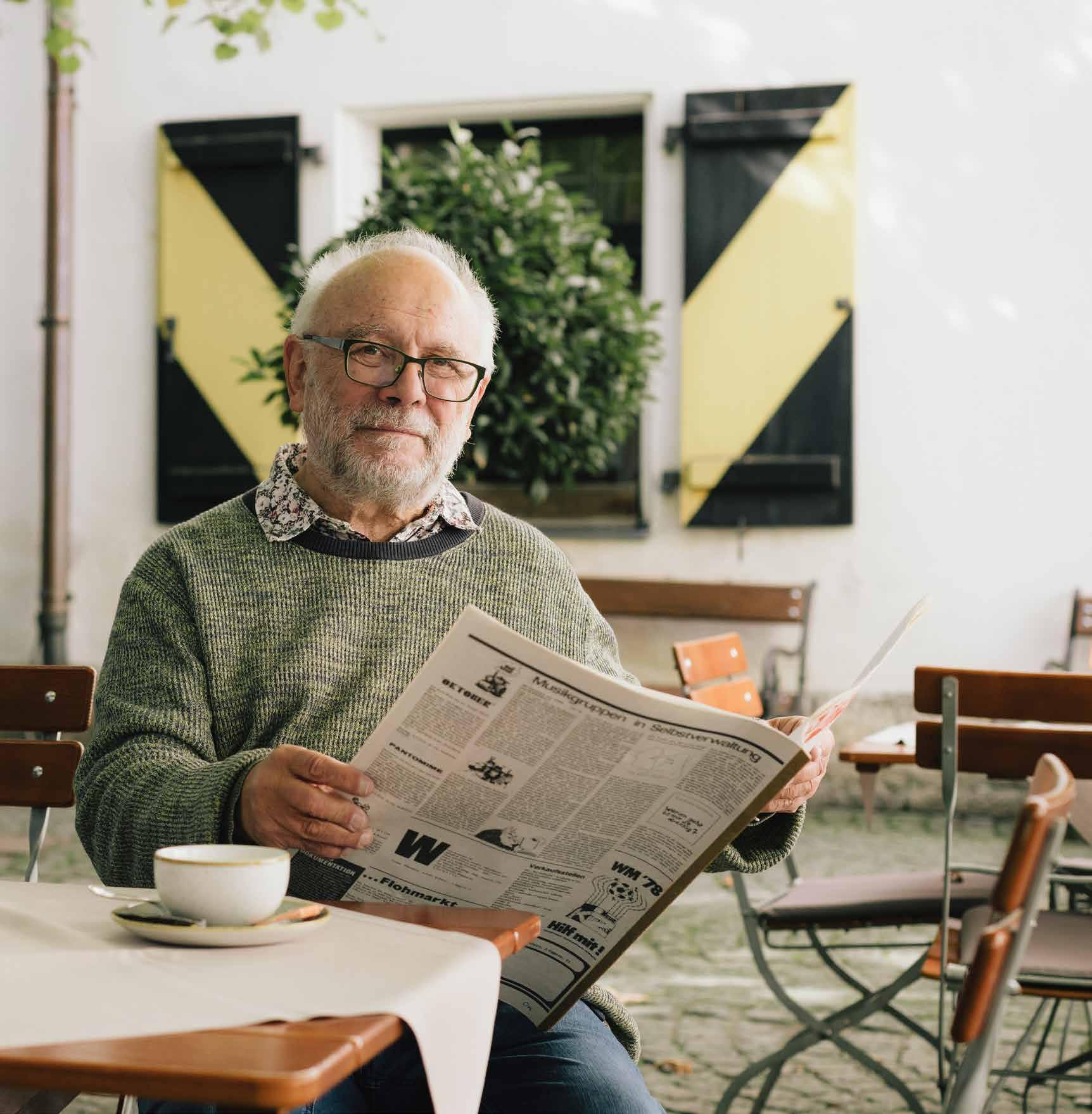
It is well known that voles love to dig. They often cause considerable damage – but not in Kufstein: without the legendary vole club, which was founded in the 1970s, the cultural scene in Kufsteinerland would certainly not be as diverse today.
Ahigh level of dissatisfaction and the resulting desire for change were the driving forces behind the founding of the Wühlmaus Club, which went down in Kufstein history. ‘Apart from folk music, Tyrolean evenings and a little classical music, we had little else to do 50 years ago,’ says co-founder Hugo Neuhauser, summing up the situation in the 1970s.
Action was called for, and so a group of young women and men initiated the Wühlmaus Club in 1974. Even the location of the founding was unique. In the former ‘Waltl’ inn, where the famous Kufsteiner Lied’ was first sung, the cultural activists got together and stirred up the political and cultural scene. They not only wanted to create an alternative youth culture, but also to establish a self-managed youth centre. The former was achieved – albeit only thanks to the persistence of the members – but the youth centre remained a pipe dream.
>> Between headlines and footlights. While the newspapers report the big news, Kufstein‘s cultural scene is writing its own stories.
The Unterberger Group has been a traditional family business for almost 50 years, operating very successfully in the automotive, property and investment sectors.
Beautiful cars have always inspired us. In 21 car dealerships in Tyrol, Salzburg, Vorarlberg, Bavaria and Baden-Württemberg, we stock vehicles from numerous brands.
>> BMW GROUP
AUTO WORLDS
>> BODY REPAIR CENTRE







Against all odds
‘We never thought about giving up,’ emphasises Hugo Neuhauser, ’because working together and cooperating was important to us – against all odds.’
And there were many obstacles to overcome. The biggest problem turned out to be finding venues. In the beginning, the Wühlmaus was able to perform in inns such as the ‘Waltl’ or the Kolpingsaal, but over time more and more venues refused them entry.
Hugo Neuhauser recalls with a grin: ‘We were literally left standing outside the doors, we were that dangerous. Even Kufstein Fortress was declared a cultural exclusion zone – completely inconceivable today!’
The voles wanted to dust off the old walls with their Whitsun festival Junge Burg (Young Castle). When the three-day event took place for the second time in 1976, it was also the last time.
‘Junge Burg in exile’
But they wouldn‘t have been the cunning voles if they hadn‘t looked around for something different.
Without further ado, the festival, which featured jazz, rock and folk, was moved to the Stimmersee and finally to the gravel pit near Kufstein under the pithy name “Junge Burg im Exil” (Young Castle in Exile).
Creating beautiful buildings is our second passion. The Unterberger Immobilien team handles several small and large projects in Austria and Germany every year.
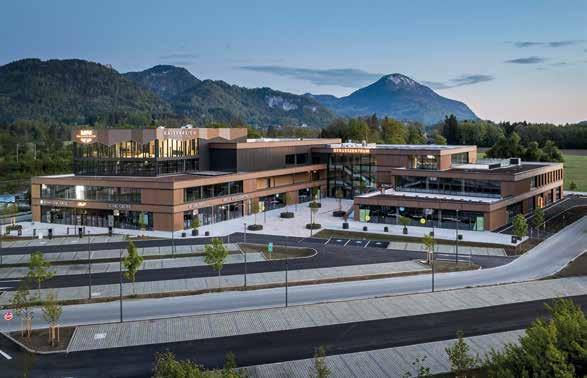
Become a tenant now www.kaiserreich.de
UNTERBERGER BETEILIGUNGS GMBH
Salurner Straße 38, A-6330 Kufstein, Tel.: +43 (0) 53 72 / 64 600, Mail: office@unterberger-gruppe.cc, www.unterberger-gruppe.cc
UNTERBERGER IMMOBILIEN GMBH
Salurner Straße 38, A-6330 Kufstein, Tel.: +43 (0) 53 72 / 64 500, Mail: info@unterberger-immobilien.cc, www.unterberger-immobilien.cc
However, the search for suitable locations became increasingly difficult, and so the idea of having their own cultural centre was born. In the middle of the city – where the Kultur Quartier now welcomes its guests – a group of intrepid idealists created their own club premises, including a world shop, a pub, an alternative bookshop and enough space for events, without having to depend on patrons.
The many ideas of the voles had been given their scope. In addition to their own newspaper with the resounding title ‘WC-Jodler’, the association really took off: panel discussions on topics such as drugs, nuclear power and military service, jazz and blues concerts, as well as a country programme for the surrounding communities, to name just a few of the unconventional events organised by the active association at the time.
Book recommendation:
In autumn 2025, a volume dedicated to the vole club will be published in the successful ‘Edition Kufstein’ series by the municipality of Kufstein. A must-have for anyone who wants to learn more about the voles!
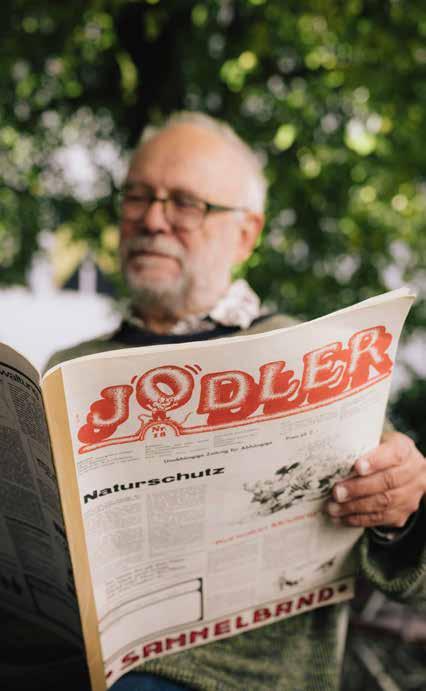
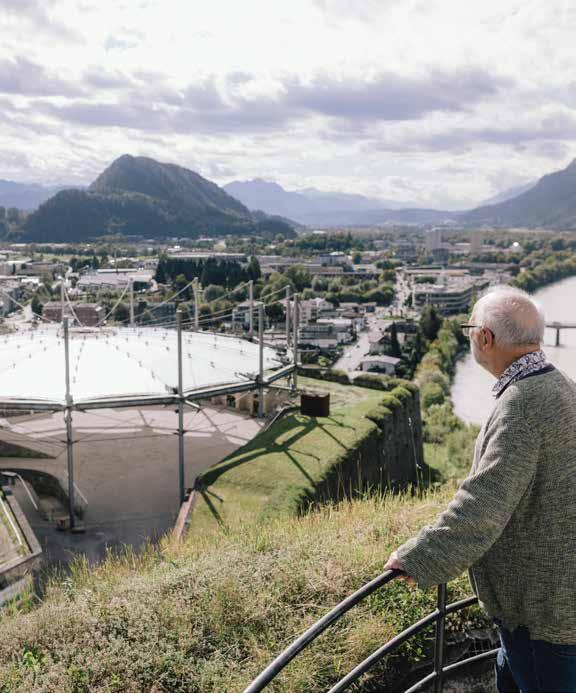
What a theatre!
‘Not to forget the theatre productions,’ points out Hugo Neuhauser. ’According to public opinion, the plays we showed were real scandals. The performances by Peter Turrini and Ferdinand Bruckner earned us a lot of hostility.’ Nevertheless, there were also favourable voices to be heard, as Hugo Neuhauser reports: ‘We were particularly pleased about the solidarity concert by singer-songwriter Georg Danzer, who came to Kufstein especially for us.’ Nevertheless, it was not the lack of subsidies and constant attacks that led to the dissolution of the Wühlmäuse in 1986/87. Rather, key members left, staff shortages became widespread and the end of the association was sealed a good ten years after its founding.
Once culture, always culture
‘We just wanted to show how it‘s done!’ answers Hugo Neuhauser mischievously when asked about the founding of the Wunderlich cultural association. Convinced that culture can be done differently, Hugo Neuhauser and his fellow mountaineers initiated the next cultural association in 1991, almost twenty years after the Wühlmäuse. This
time, it had its own catering. It was extremely successful, and today the ‘Wunderliche Kulturtage’ (Wunderlich Culture Days) are an integral part of the colourful scene in Kufsteinerland. ‘Not so different from the wild burrows of the 70s, just a more refined form,’ is how the energetic chairman describes them. Together with his team of around 20 people, he brings high-profile artists from a wide range of genres to Kufsteinerland. Hugo Neuhauser is on familiar terms with all of them: from actresses Iris Berben and Senta Berger, to cabaret artist Thomas Stipsits, to mountaineering legend Reinhold Messner. He reveals his recipe for success: ‘It is the personal contact with the artists that makes my cultural work so special. How nice it is to sit together and chat after the show.’
It is easy to believe that the aim of the Wühlmaus Club and the Wunderlich Cultural Association is the same today as it was then – as Hugo Neuhauser summarises: ‘Our credo was and is to bring familiar and unfamiliar faces to our stage at an international level – often as Austrian premieres.’ This has been a great success, and the days when the great writer H.C. Artmann had to read in the hallway of the Kufstein grammar school at the invitation of the Wühlmaus Club, because the head teacher had vehemently refused to allow the Wühlmäuse to use the auditorium, are finally over. Even if the pioneering role of the Wühlmäuse has faded somewhat fifty years later, the lively cultural scene in Kufsteinerland today would not have been possible without the ‘annoying rodents’.
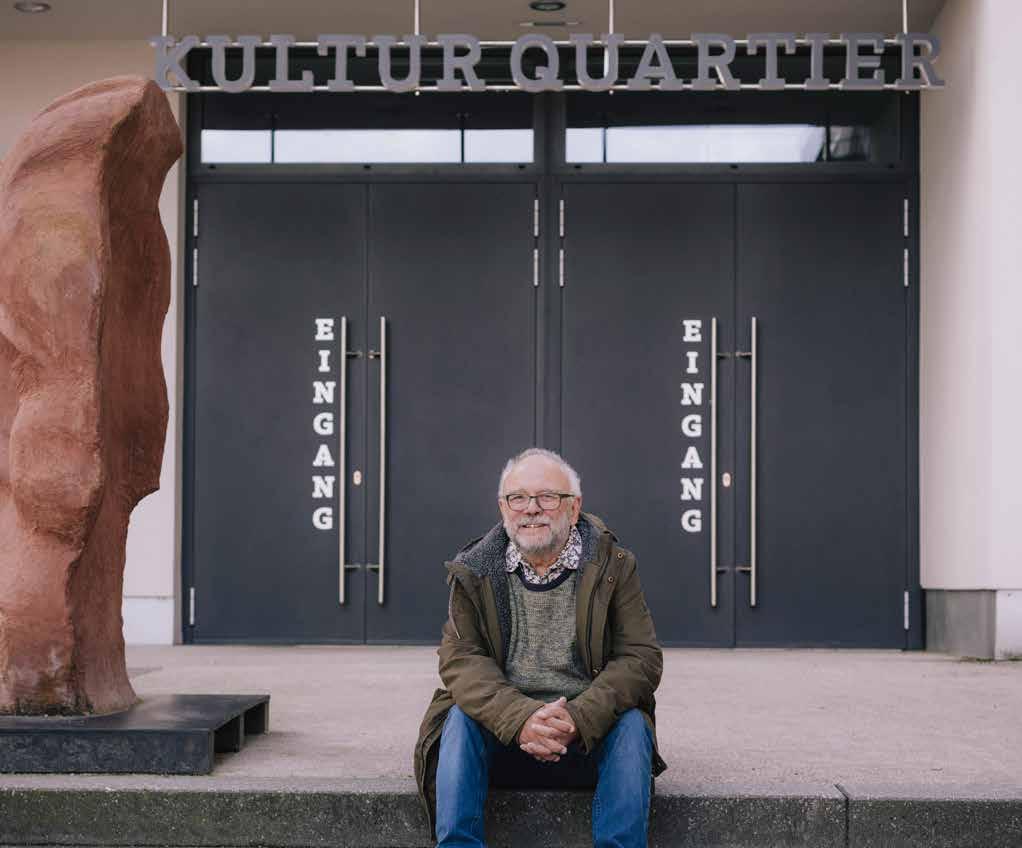
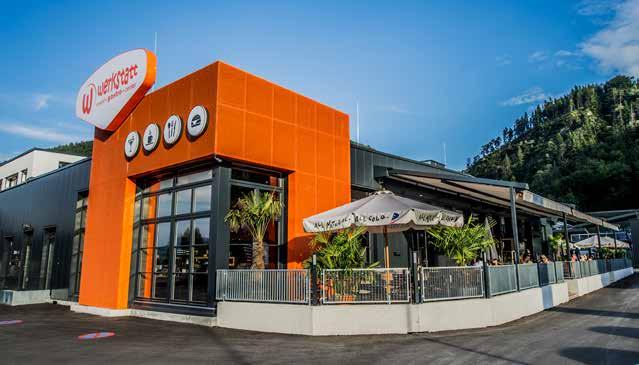


„Good food brings people together!“
Our Big Meals offer something for everyone – from burgers and salads to pizzas, finger food, ribs, and hot stone steaks. In the evening, our bartenders mix delicious cocktails for the perfect end to your day.
KITCHEN OPEN ALL DAY FROM 11 AM TO 10 PM
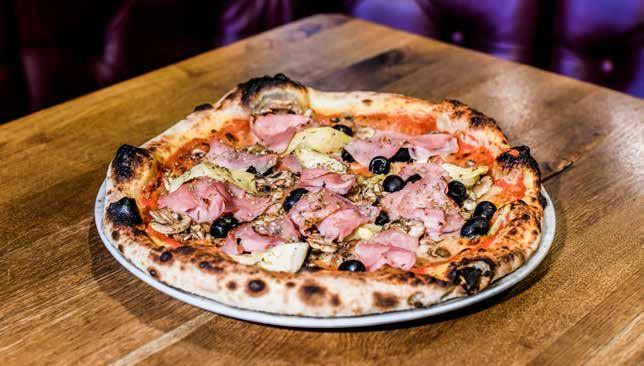

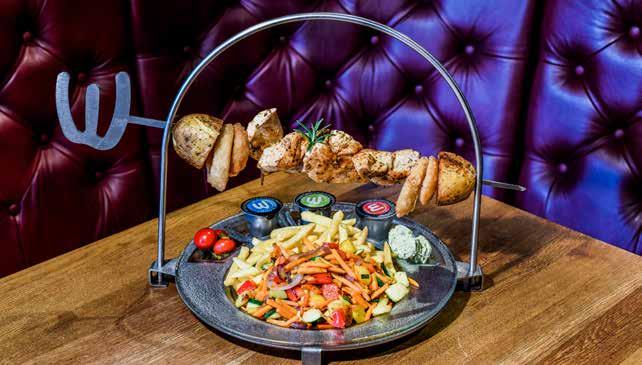







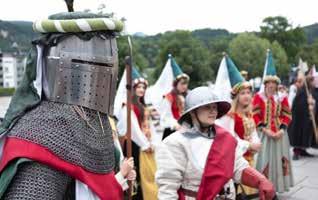
Clashing swords, fire magic and the creaking of old gates –dive into the Middle Ages! At Kufstein Fortress, jousting, epic duels and a breath of adventure await you. Here, history comes to life – with trumpets, timpani and lots of mead!
06. – 09.06.2025 | Kufstein Fortress
www.ritter-fest.de
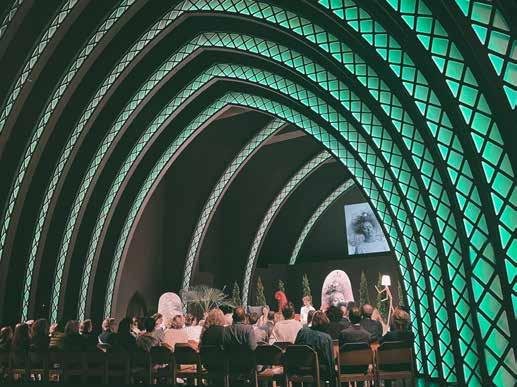
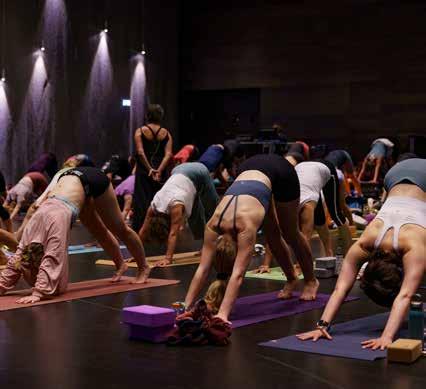
glück.tage 2025
A look at the stars, a look ahead
The 2025 edition of the glück.tage festival invites us to look up at the sky – not just to gaze at the stars, but also to gain new perspectives. Especially in turbulent times, the festival offers well-founded impulses from science, philosophy and literature. The lectures and readings invite us to reflect on tomorrow, to find orientation and to draw confidence.
16.05.2025 | Michael Schmidt-Salomon | Kultur Quartier Kufstein
17.05.2025 | Lisa Kaltenegger | Festival Theatre Erl
04.10.2025 | Raoul Schrott | Passion Play Theatre Thiersee
www.glueck-tage.com
Kufsteinerland and the fortress city of Kufstein welcome yogis of all styles. The festival combines yoga, nature and music over three days. Together, we will learn to let go, recharge our batteries and strengthen our connection to ourselves and others in the middle of the Tyrolean mountain scenery. We look forward to meeting you. Namasté!
18. – 20.07.2025
www.yoga-tage.at
Words that can fly! This festival brings the literary scene to Kufstein with free admission! Whether lyrical, loud or quiet – international authors and their stories will make you dream, laugh and be amazed. If you love language, it will be your highlight of the autumn!
12. – 14.09.2025 | Culture Quarter Kufstein
www.sprachsalz.com
Big emotions on a big stage
Music that connects
Goosebumps guaranteed! Kufstein Fortress is transformed into a stage for great emotions. In 2025, the show is ‘West Side Story’. Passion, drama and world-famous songs in a unique setting – a summer to remember.
24.07. – 10.08.2025 | Kufstein Fortress
www.musicalsommer.tirol
Melodies that go straight to the heart: the festival for guitar lovers brings international artists to the stage. From classical to world and fado, to fiery gypsy and flamenco rhythms –summer sounds full of yearning, passion and joie de vivre here!
14. – 16.08.2025 | Festival Theatre Erl
erl.laguitarraesencial.com
Not the circus you know! Here, acrobatics, theatre and dance merge into a breathtaking show that will enchant your senses. Let yourself fall into a spectacle that brings the stage to life.
22.01. – 01.02.2026 | Culture Quarter Kufstein
www.circustage.at
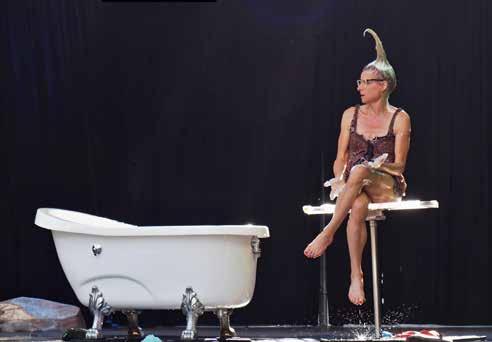
All upcoming events, highlights and dates are now available on a central platform. It‘s worth taking a look – for the latest information and exciting events in the region: www.kufstein.com/events The information is continuously updated. Subject to change.
Kufsteinerland is one of the few regions to have been awarded the Austrian Ecolabel for destinations – a certification that focuses on commitment to sustainable tourism. Here, nature conservation, regional development and gentle mobility go hand in hand to create a harmonious balance between the environment and recreation.
A trip to Kufsteinerland means a sustainable holiday without compromise. Environmentally friendly accommodation, resource-saving leisure activities and climate-friendly mobility make it easy to discover the region responsibly. Those who holiday here not only enjoy nature, but also actively contribute to its protection –whether through conscious consumption, gentle mobility or appreciation of regional products.
The guest card is much more than a discount card – it serves as an admission ticket, a travel ticket and a benefit pass all at the same time. Guests receive it free of charge when they check in at their hotel or holiday apartment and can use it to take advantage of numerous discounts on the day of their arrival.
Welcome to a region that proves that sustainable tourism and unforgettable holiday experiences go perfectly together!
There are numerous environmentally friendly and relaxed ways to explore Kufsteinerland. The KufsteinerlandCard offers free or discounted access to public transport and attractive benefits in the region. Those who prefer to be active can discover the area flexibly and sustainably on two wheels with the Regiorad – whether it‘s for a stroll through town, a trip to the lake or a relaxed ride along the River Inn.
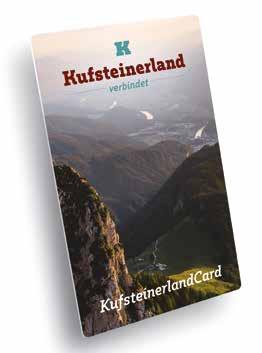
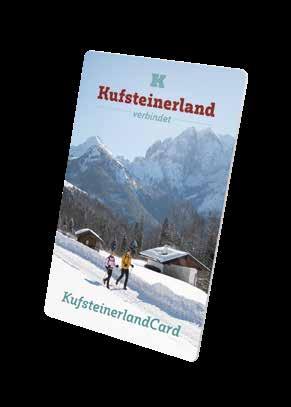
Visit now and leave the everyday behind!
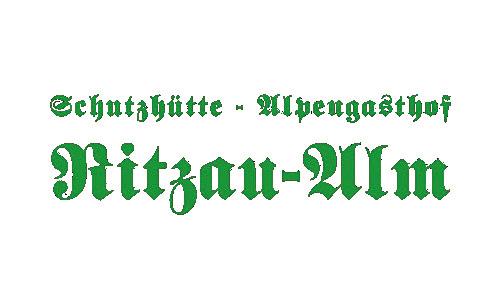
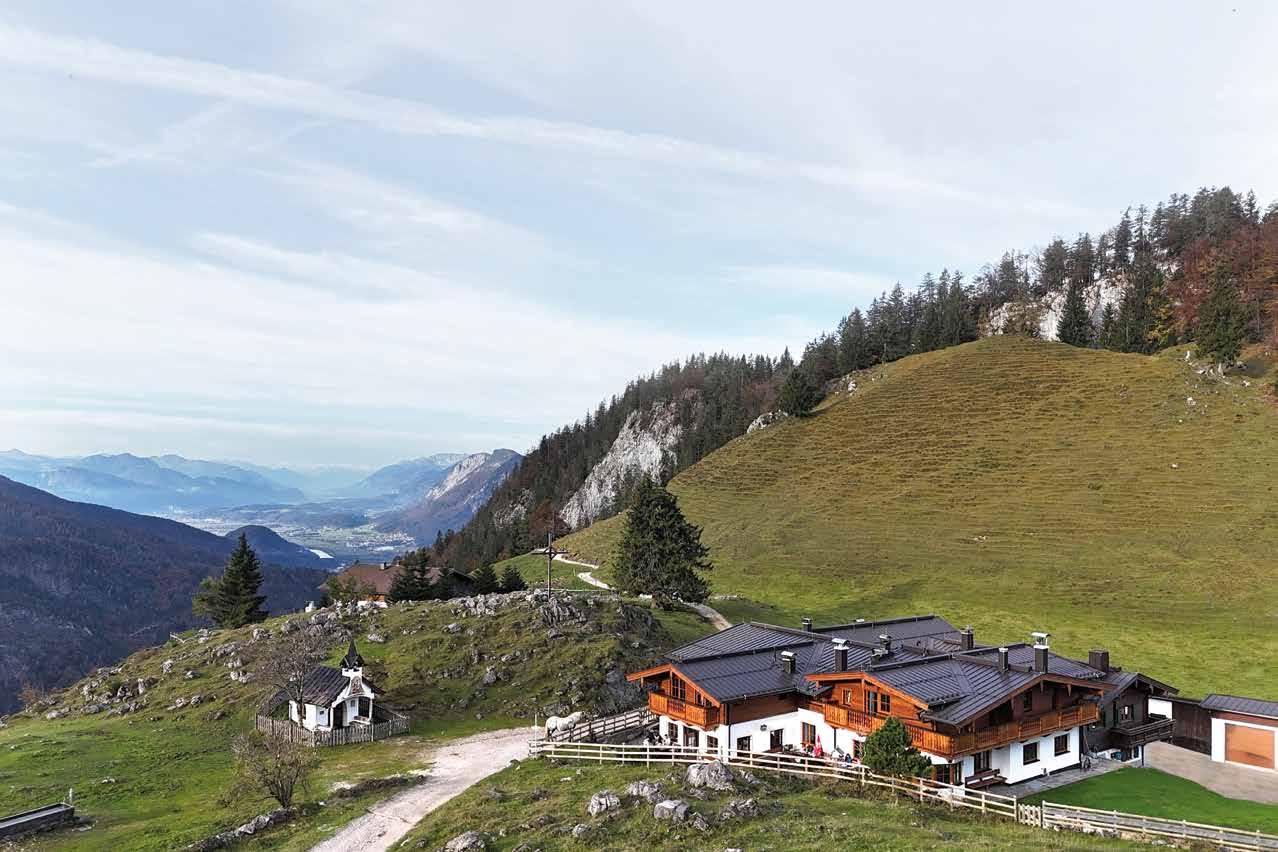
ALWAYS AN EXPERIENCE –AT THE WESTERN FOOTHILLS OF THE “ ZAHMER KAISER“!
Enjoy unforgettable moments at 1,161 metres –with hearty Tyrolean specialties, breathtaking views of the Kaiser Mountains and genuine hospitality
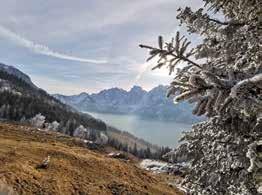


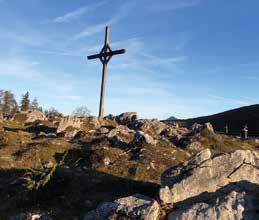
Whether you‘re a hiker, gourmet, or nature lover – you‘re in the right place! Your destination for enjoyment and relaxation.
Ritzau-Alm | Family Anker
Kaisertal 14, A-6341 Ebbs +43 5372 63624
info@ritzaualm.com For information about opening hours, visit www.ritzaualm.com
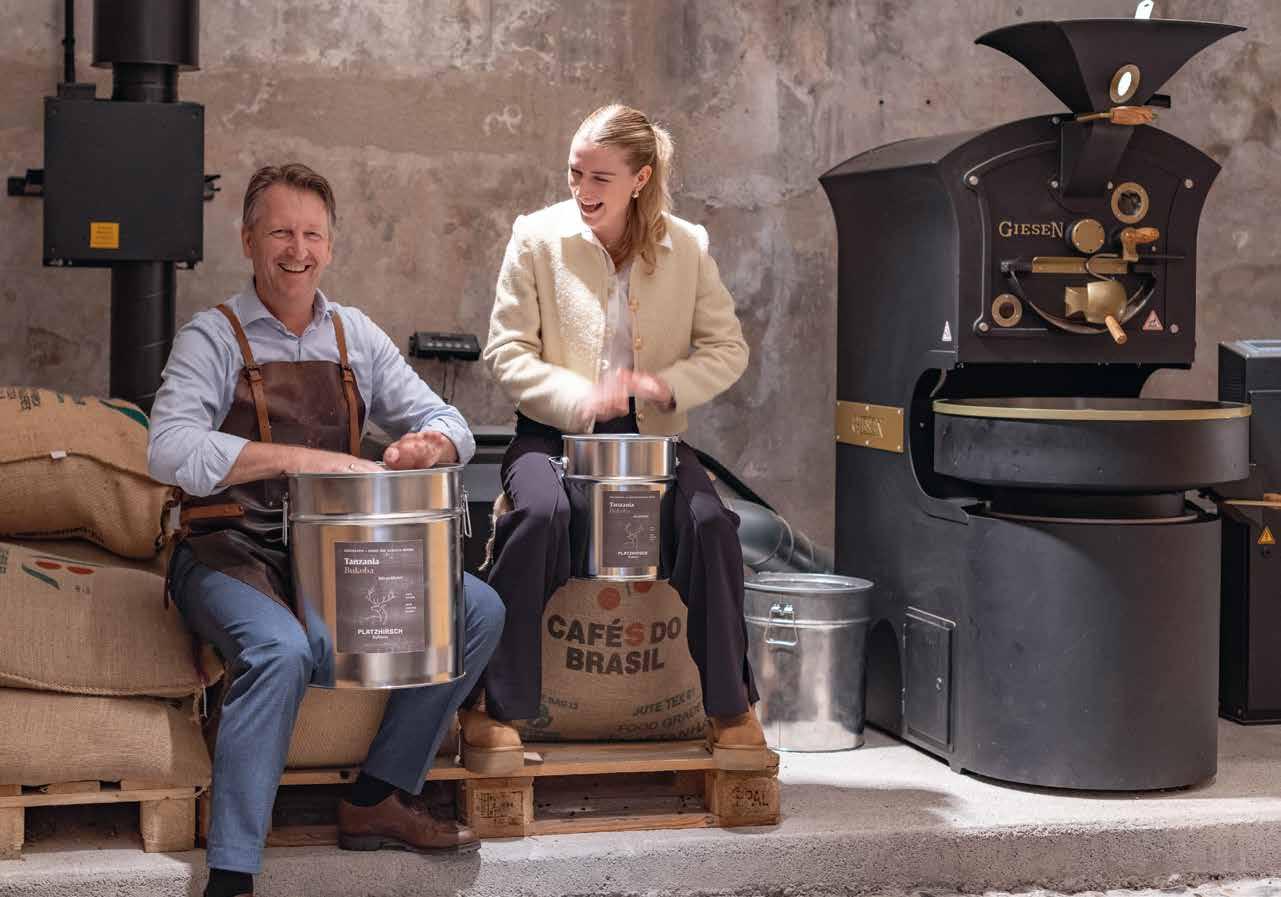


Our freshly roasted coffee beans can be purchased at our coffee house
At the Platzhirsch we have set ourselves an ambitious goal: with the help of our handcrafted GIESEN coffee roaster we roast the best beans from all over the world right here at our coffee house. However, we are not only aiming at producing the best coffee, but also refining the Platzhirsch brand itself. Every roast we create (both for our coffee house and on demand) has an individual and unique touch.